The All-22: Six throws that display Marcus Mariota's quick NFL transition

Give Ken Whisenhunt credit: He had Marcus Mariota's future success in mind all along. When the Titans' head coach was asked about the Oregon quarterback in March at the owners meetings, Whisenhunt was fairly emphatic that Mariota could shake off the “system spread quarterback” label and succeed in the NFL.
“I’ve gone to his workout and worked him out and was very impressed with him,” Whisenhunt said. “We spent an hour and a half with him in the classroom and then out on the field and worked out with him and how he handled all of that situation, he did a really nice job. ... To me, he shows a lot of the qualities that you see those guys that have been successful in the league have. The team gravitates to him and you can see they really like him. He’s an accurate thrower, he doesn’t turn the ball over much, and he can extend the play. He can do a lot of things that guys at that position do who have been tremendously successful.”
NFL Power Rankings Week 2: Patriots stay on top; Colts, Ravens tumble
Of course, not even the coach, who got Mariota in his system after the Titans selected him with the second pick, could have expected what happened when Mariota took the field for his first NFL start against the Buccaneers. The rookie threw four touchdown passes in the first half alone, becoming the second NFL player to throw four scores in his first game (Fran Tarkenton was the other), and he ended his day with 13 completions in 16 attempts for 209 yards and a perfect 158.3 quarterback rating. Mariota didn't have to do much in the second half, because No. 1 pick Jameis Winston was having far more trouble with Tennessee's defense, and the Titans got their 2015 season off to a rollicking start with a 42–14 rout. Winston completed 16 of 33 passes for 210 yards, two touchdowns and two picks, becoming the first quarterback since Brett Favre to have his first NFL pass intercepted and returned for a touchdown.
History did indeed move in different directions for the league's marquee rookie quarterbacks. But as impressive as Mariota was, and as much as he showed more at times than he ever did at Oregon, I think it's time to give Whisenhunt and his staff more credit for that success. The Titans knew that in Mariota, they had an intelligent young player with rare athletic gifts, and instead of trying to retrofit him into a static “pro-style” passing game, they re-jiggered their structure to maximize what Mariota did so well in college.
• VRENTAS: Mariota's debut a long time in making for Titans
Mariota looks like No. 1 pick in win over Winston's Bucs; Week 1 snaps
“There will be some things that we do that fit what he does, and what he’s had success with,” Whisenhunt said soon after Mariota was drafted. “There’s a lot of concepts that he’s run in college that are very similar to parts of our offense and you can already tell he’s comfortable running those parts of it,” said Whisenhunt. “But there’s other parts he’s got to learn how to do, from a standpoint of taking a snap from under center, being able to handle the complexities that come with some of the different checks and some of the different defenses you face. And from throwing in the pocket, at some point in this league you got to be able to make some throws in the pocket and he will do that, and I think he did some of that at Oregon, and we will certainly find good middle ground for us.”
You saw a lot of that middle ground against a Bucs defense that seemed uniquely ill-equipped and inflexible against it, and the primary addition to Tennessee's offense was the package play.
Put simply, the package play is an expansion of the various zone-read run concepts that give a quarterback the option to run or hand the ball off based on the reaction of a key defender. In package plays, the passing option off a defender is included, and it's been an advantageous concept for college coaches, because you can compress several potential calls into a single formation, run that formation over and over, and get different results based on defensive reactions (Chris Brown of Grantland and Smart Football has an excellent history and breakdown of the package play concept here).
Oregon did this all the time with Mariota at the helm: They'd line up in a base formation with a few calls in the playbook, read a specific defender and react accordingly. Here's one example from Oregon's 2014 game against Michigan State: Mariota is reading the deep slot defender, knowing that the defense is selling out its intermediate coverage in favor of a blitz to the inside gaps. He sees the slot defender hesitate, most likely reading the run action, and knows he's got a pretty easy downfield connection.
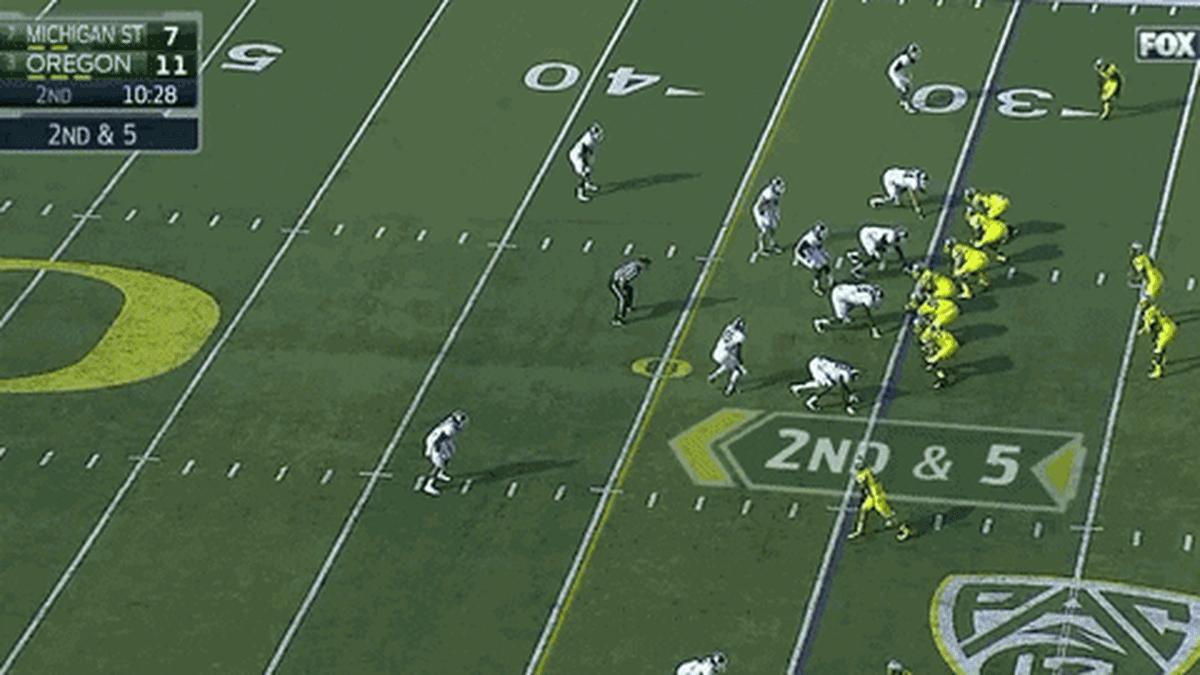
• KING: Don't panic, Seahawks fans; more Mailbag | Week 1's top 15 teams
In reviewing Mariota's game against the Bucs, I saw several different iterations of the package play concept, but an equal number of signs that the rookie is adapting to the NFL at an accelerated rate. Here are my thoughts on six plays, with additional insight from Greg Cosell of NFL Films and ESPN's NFL Matchup.
1. Let's start with Mariota's first NFL completion, a 20-yard bang throw to tight end Delanie Walker with 14:06 left in the first quarter. This was an important statement for the rookie for a few reasons. First, he read Tampa Bay's dual A-gap blitz look at the line and correctly reacted to the half-blitz/half-drop look from the linebackers. Lavonte David dropped into the intermediate area with defensive back Sterling Moore converging, and Mariota made a totally professional throw to Walker. He stepped up in the pocket and made the throw with perfect velocity and timing. For a quarterback who was supposedly too dependent on a system in which easy receiver openings were the order of the day, this was quite impressive.

2. I'll let Greg take the floor for Mariota's first NFL touchdown, a 52-yard pass to Kendall Wright, because he has an interesting point about how the Titans can differentiate between package plays and play action, further confusing defenses—especially defenses that don't adapt:
“This play came out of shotgun with Mariota flanked by running backs Bishop Sankey and Dexter McCluster, and tight end Anthony Fasano split outside the numbers to the field with Wright in the slot to the field,” Greg told me. “It was 21 personnel versus the Bucs' base 4-3. The inside run fake to McCluster was not read option, it was shotgun play action. Mariota had bang play-action hitting Wright on a quick slant behind the linebacker reacting to run action. Safety Bradley McDougald showed poor eye discipline from a two-deep shell in not deciphering what was in front of him. The play is designed for Wright; it’s not a read.”
And that's an important delineation. With Mariota at quarterback, the Titans have opened up the possibilities to include all sorts of reads, play-action and run-action, and with Mariota reading the action quickly, it's going to be tough to stop. By the way: That's Lavonte David, one of the NFL's best linebackers, biting on run-action.

What does Marcus Mariota's perfect NFL debut portend for his future?
3. With 9:08 left in the first quarter, the Titans showed very similar looks on back-to-back plays on completions to receivers Justin Hunter and Kendall Wright. The first throw, from the Titans' 39-yard line on second-and-eight, shows the Bucs shifting their safeties pre-snap, but it doesn't matter; Mariota has his concept together, and it's something he ran a ton at Oregon. He saw that both inside linebackers were biting on the run-action and the inside play fake, and knew that Hunter had a good shot of getting open if he cut his route at the right time and created space underneath the cornerback. With no linebacker help in a base zone defense, it was an easy pitch-and-catch. The movement by the safeties didn't matter. The Bucs could have been Riverdancing out there, and it wouldn't have made any difference.

4. The throw to Wright on the next play was a similar concept and execution, with one slick difference: Wright was the slot receiver, not the outside man. I really liked how the Titans used receiver spacing and redistribution as part of their passing game.

5. This 20-yard pass to Harry Douglas with 7:35 left in the first quarter was another example of how the Titans (and every other NFL team) use motion to discern coverage. Take it away, Greg:
Six projected contenders in trouble after 0-1 starts to the season
“This play came out of 11 personnel. It was a 3-by-1 set closed to the boundary with all three receivers to the field. Douglas's motion confirmed that it was man free coverage, Mariota initially wanted Kendall Wright, but Wright slipped and his route was not defined within the timing of the drop, Mariota did an outstanding job coming off Wright and hitting Douglas with precise ball placement and the pocket closing down.”
So much for Mariota being reliant on one read only. He was involved in a lot of multi-read stuff at Oregon, and he brought that acumen to the NFL.

6. The final play analyzed is Mariota's 12-yard touchdown pass to Sankey at the end of the second drive. Quick motion discerned the coverage, and Mariota read the easy throw to Sankey out of the backfield. Two things made that easier: Wright took cornerback Alterraun Verner out of intermediate coverage with a vertical route, and linebacker Kwon Alexander crashed down hard on Mariota, leaving Sankey open as David struggled to catch up.

It will be interesting to see how this offense plays out through the season. One thing's for sure: When the Titans face other teams, they shouldn't expect the same free passes they got from Tampa Bay's defense. For whatever reason, Lovie Smith's squad seemed stuck in 2005, when Cover Two and Tampa Two looks were the order of the day, package plays didn't exist and defensive flexibility wasn't a supreme requirement against more multi-faceted offenses. That said, Mariota's got a lot on the ball, and his coaches have established the perfect structure for his talents.
Good offense has always been about deceptive simplicity—the clearest path to success is to make things as simple as possible for your players while also keeping defenses off-balance. It’s a difficult recipe, as an offense that is too simple can get dissected, analyzed, and shut down by a savvy defense, but a team that tries to do too many things will master none of them. Packaged plays solve the quandary by combining simple plays all the players can execute in such a way that—if the quarterback makes the right decision—the offense always has the advantage, because no defender can be in two places at once.
Defenders playing the Titans this season will often feel the need to be in two places at once, and the combination of Mariota and Tennessee's adaptive coaching staff will present all kinds of problems at this rate. Other offenses will take notice, as they always do when new things work in the NFL.
GALLERY: Best photos from Week 1 around the NFL
Week 1 of the 2015 NFL Season
Carlos Hyde
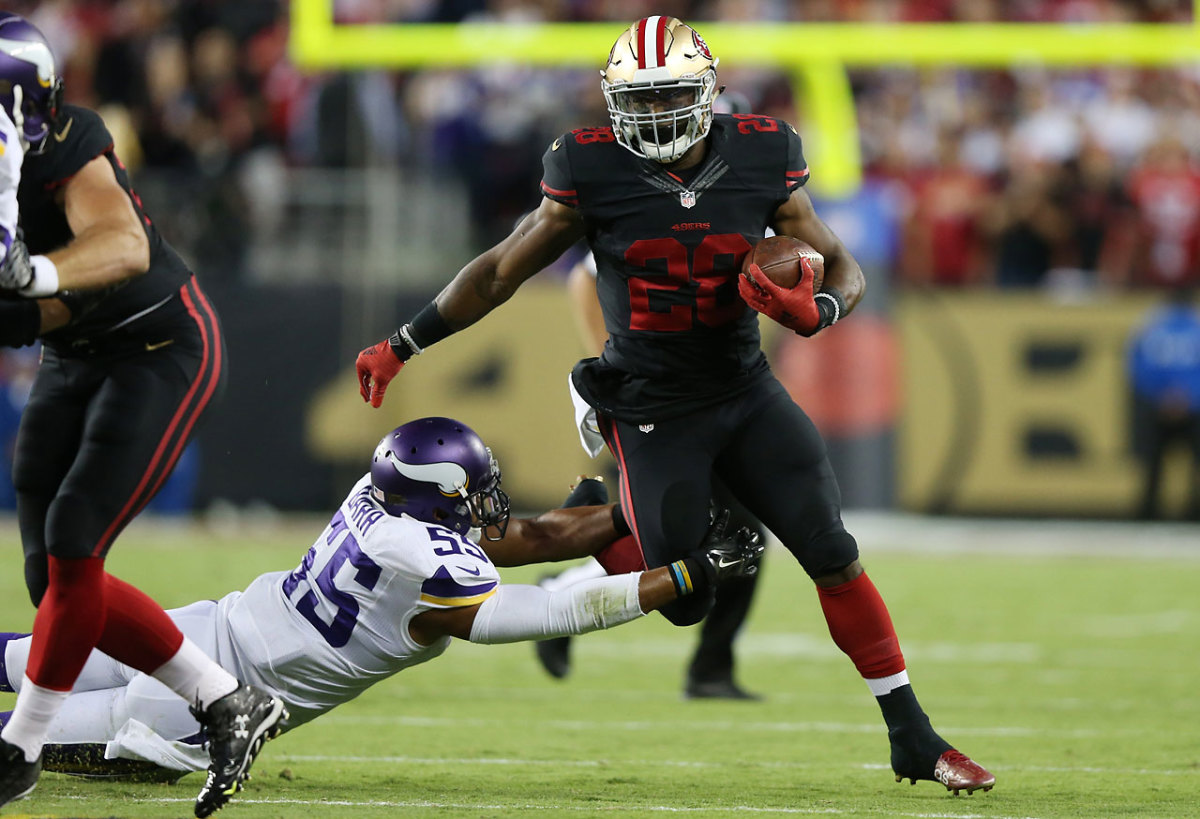
Carlos Hyde of the San Francisco 49ers rushes past Anthony Barr of the Minnesota Vikings.
Adrian Peterson
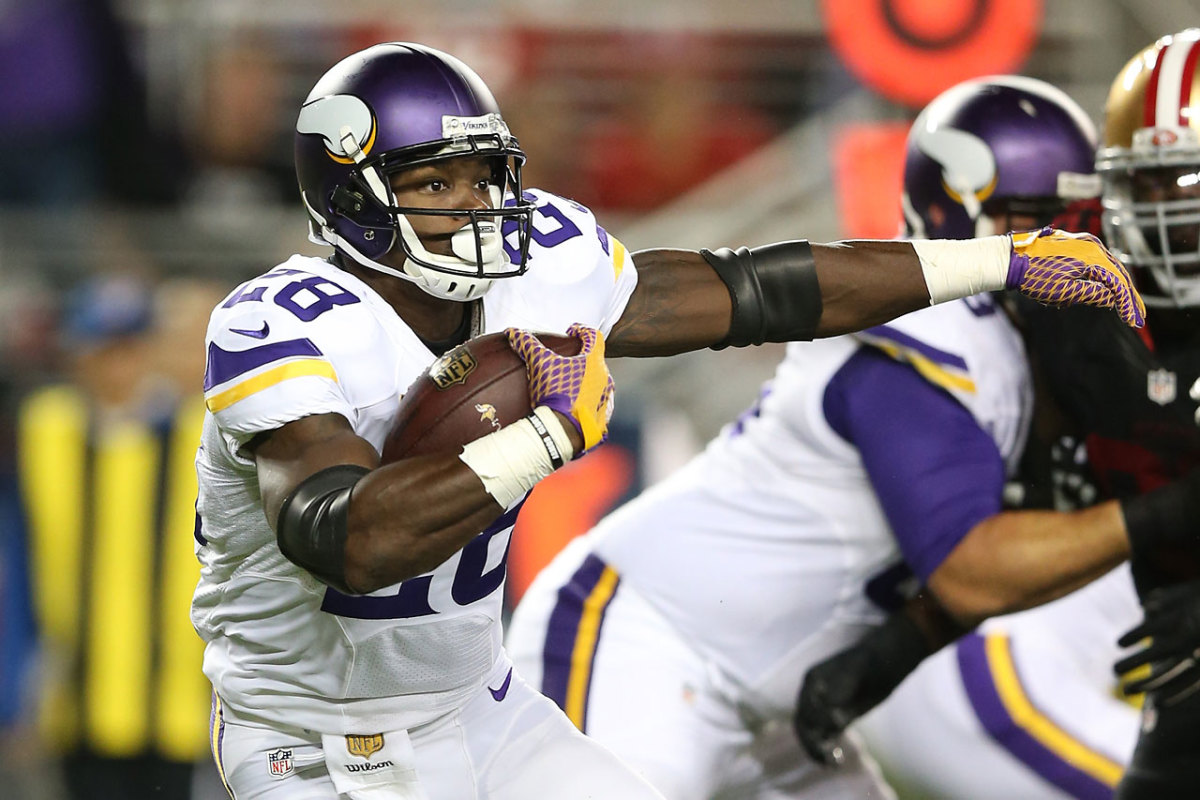
Adrian Peterson played in his first game in over a year Monday night as the Vikings lost to the San Francisco 49ers.
Jarryd Hayne
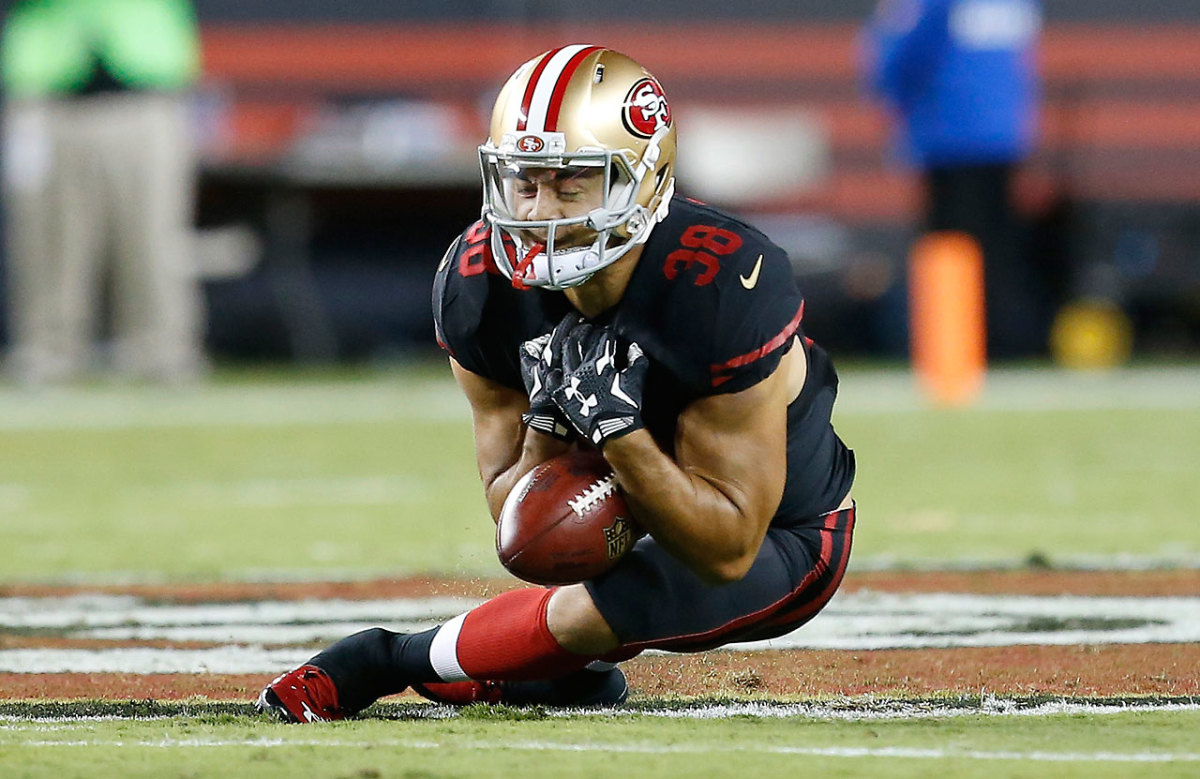
Former rugby star Jarryd Hayne fumbles a punt in his first NFL game with the San Francisco 49ers.
Julio Jones
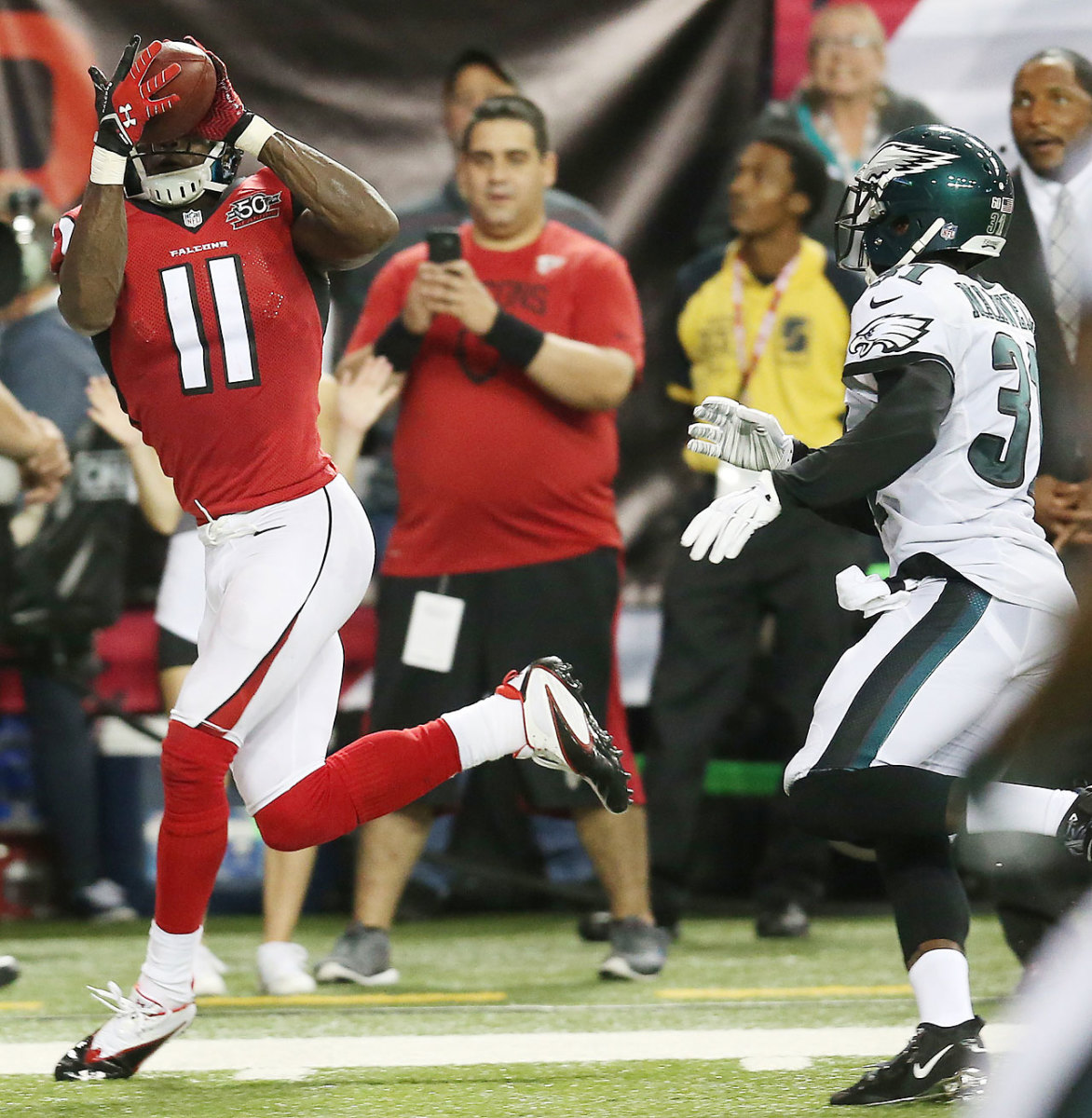
Atlanta Falcons wide receiver Julio Jones makes a touchdown catch against Philadelphia Eagles defensive back Byron Maxwell.
Jordan Matthews
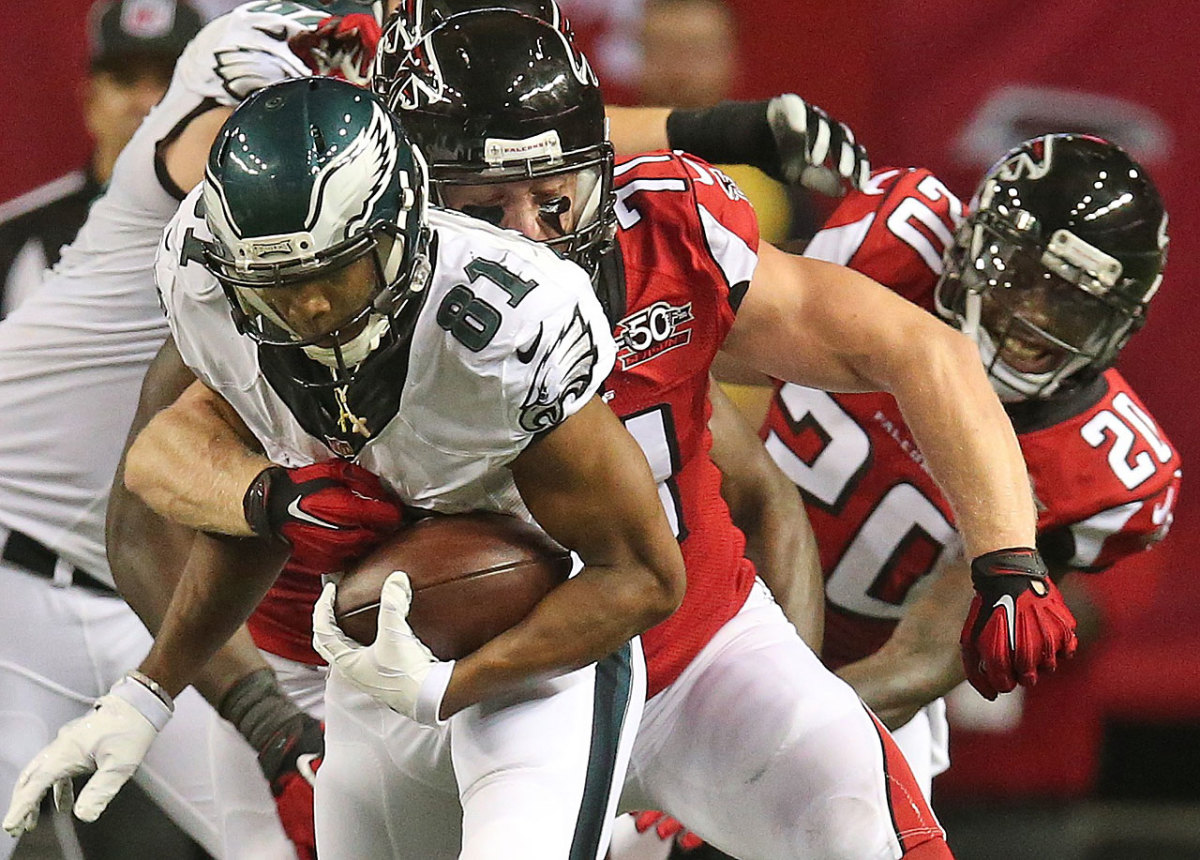
Philadelphia Eagles wide receiver Jordan Matthews (81) runs against Atlanta Falcons outside linebacker Kroy Biermann (71) during the second half.
Josh McCown
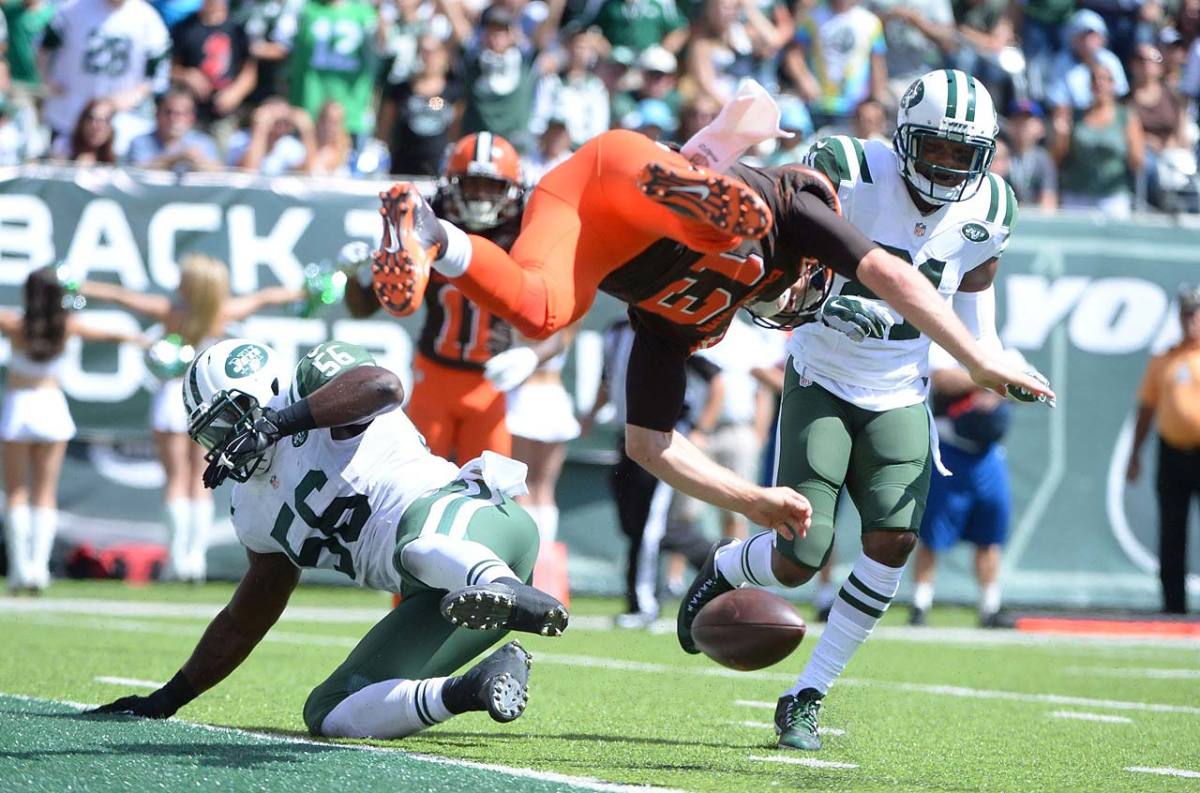
Josh McCown had to undergo concussion protocol after this leap into the end zone against New York.
Johnny Manziel
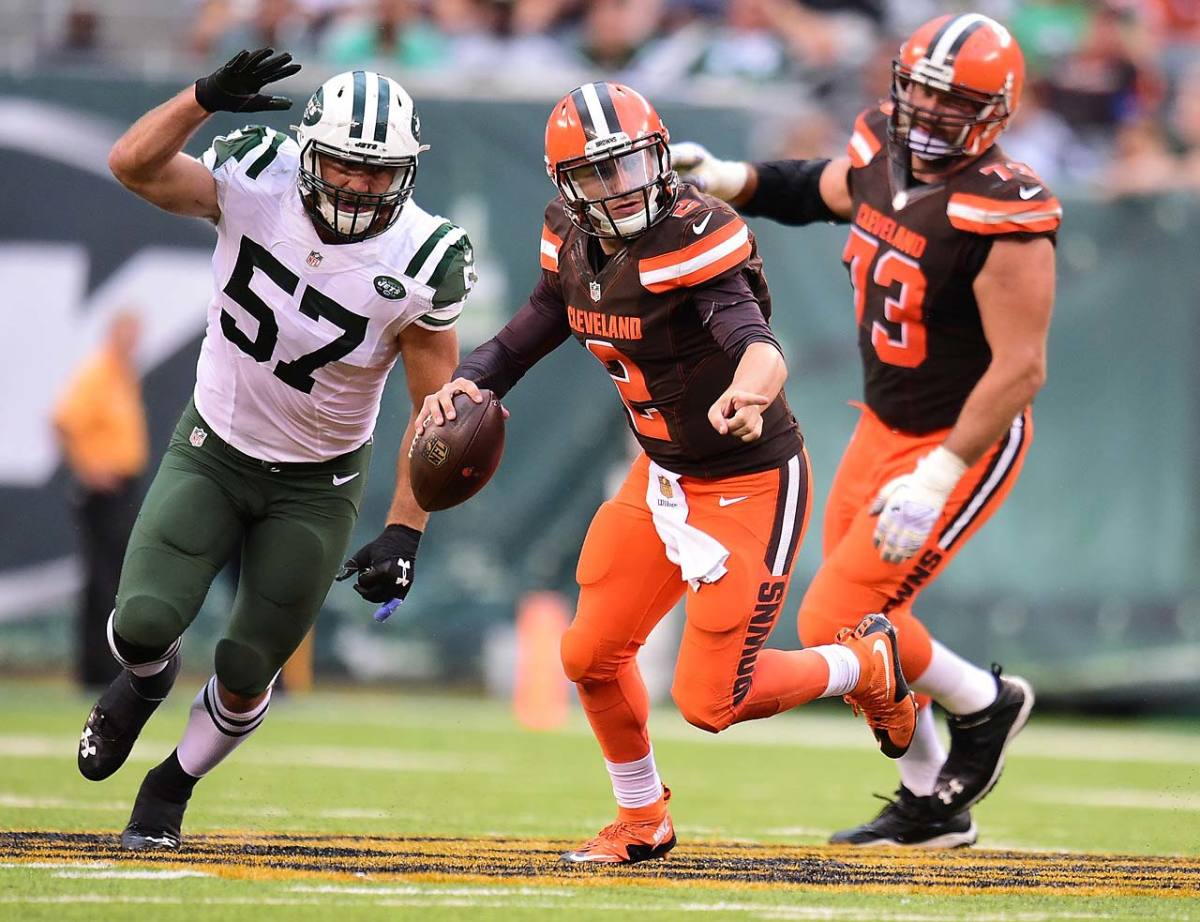
Johnny Manziel was pressed into duty in Week 1 and played an uneven game against the Jets.
Chris Ivory
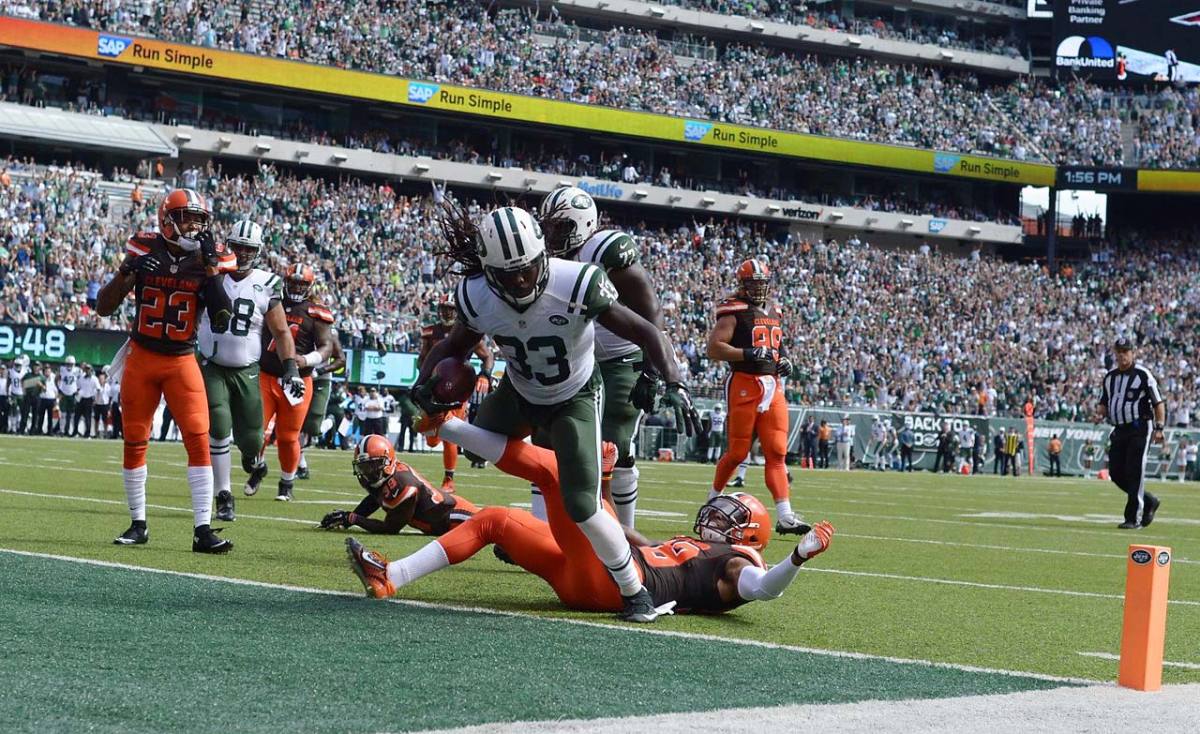
Chris Ivory scored two touchdowns against Cleveland as the Jets won their opener.
Steve Smith
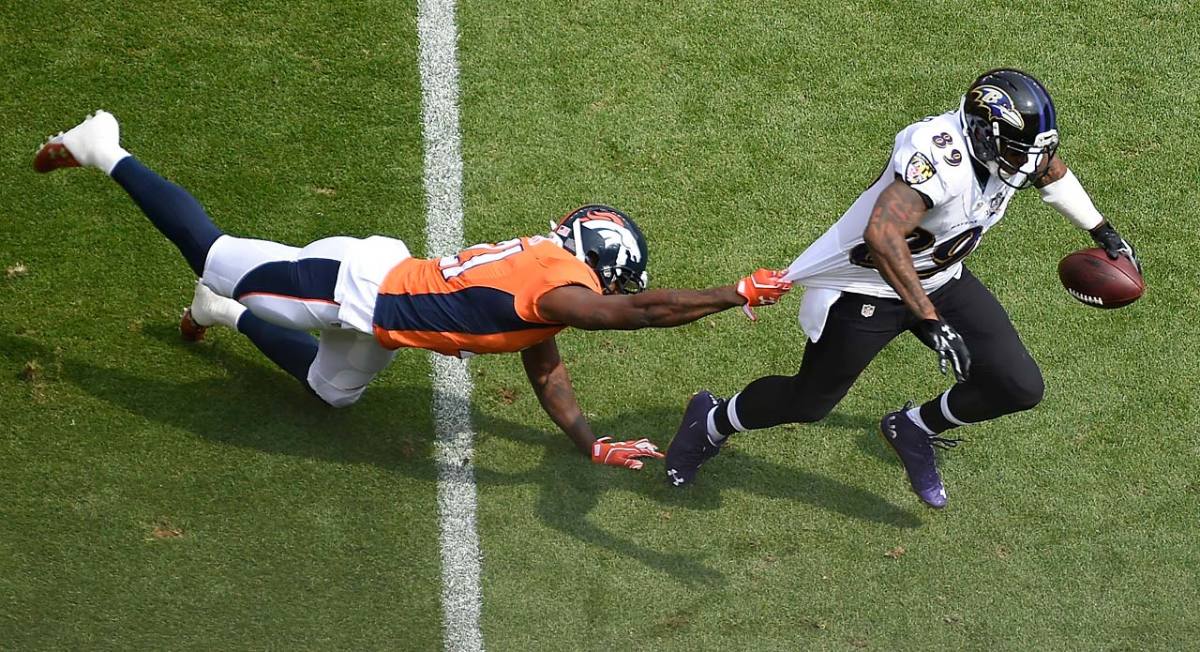
Steve Smith couldn't get away from a tough Denver defense during a Week 1 loss.
Eddie Lacy
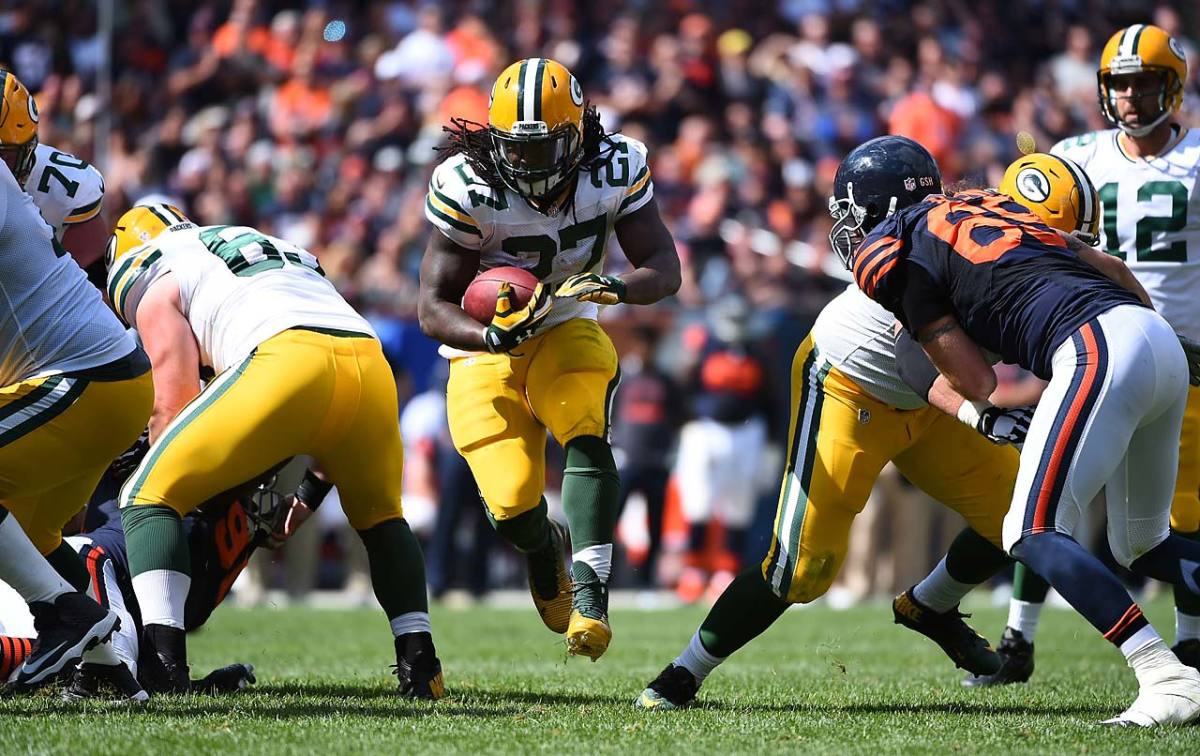
Eddie Lacy picked up right where he left off last year, bulldozing his way through the opposition.
James Jones
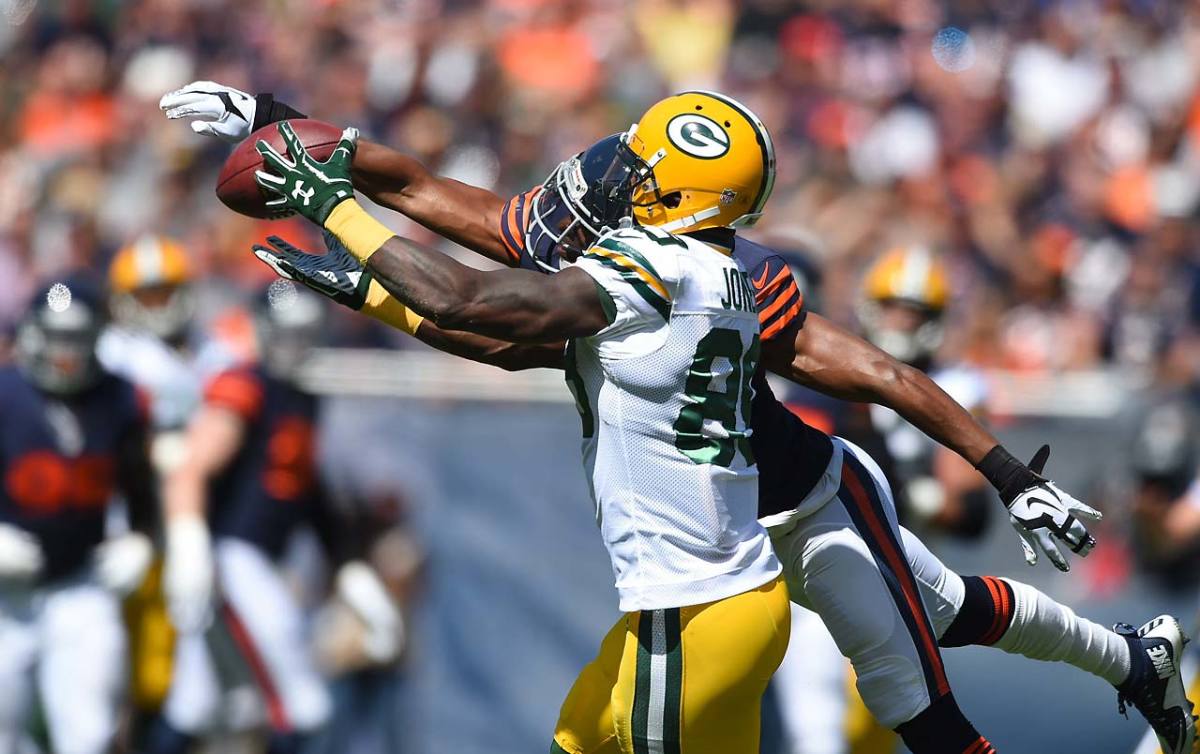
James Jones made his return to the Packers a joyous one, catching two touchdown passes in Week 1.
Donte Moncrief
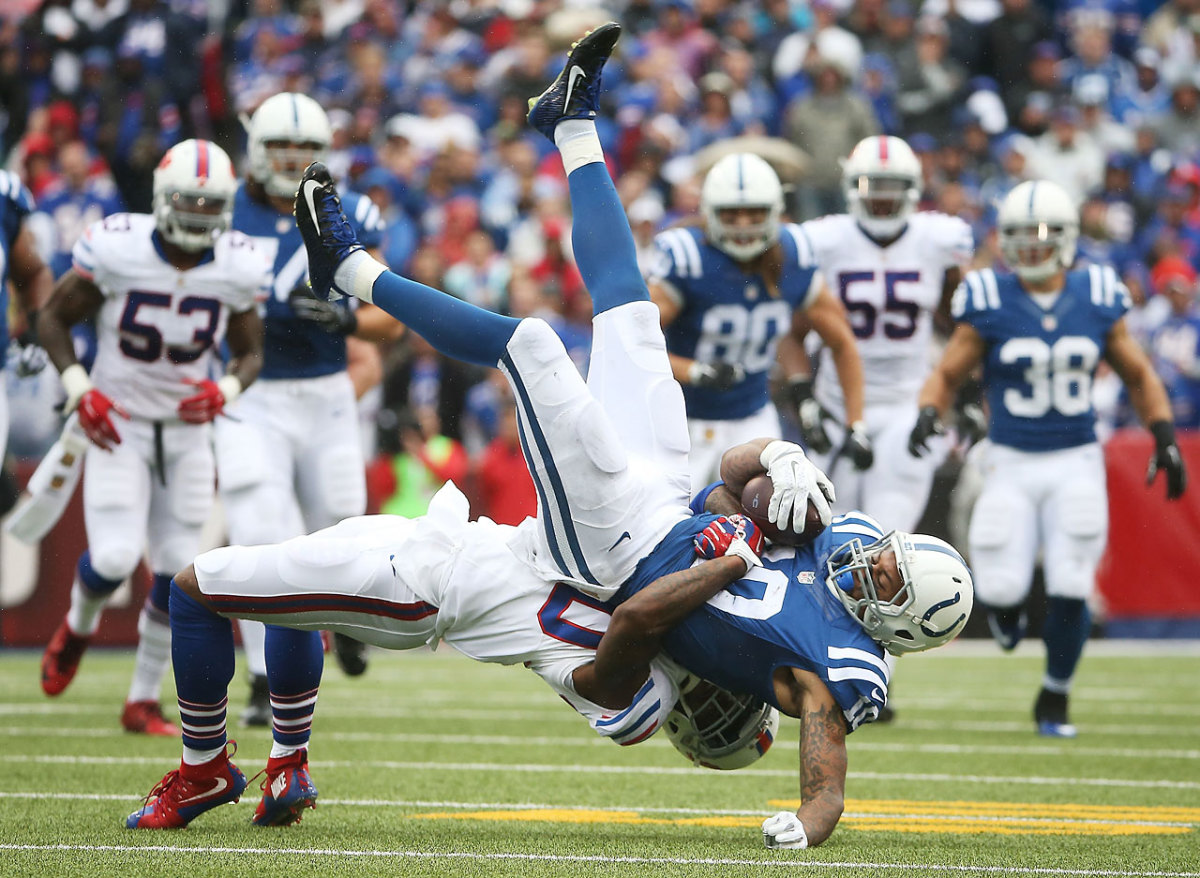
Donte Moncrief of the Indianapolis Colts is tackled by Bacarri Rambo of the Buffalo Bills.
Boobie Dixon
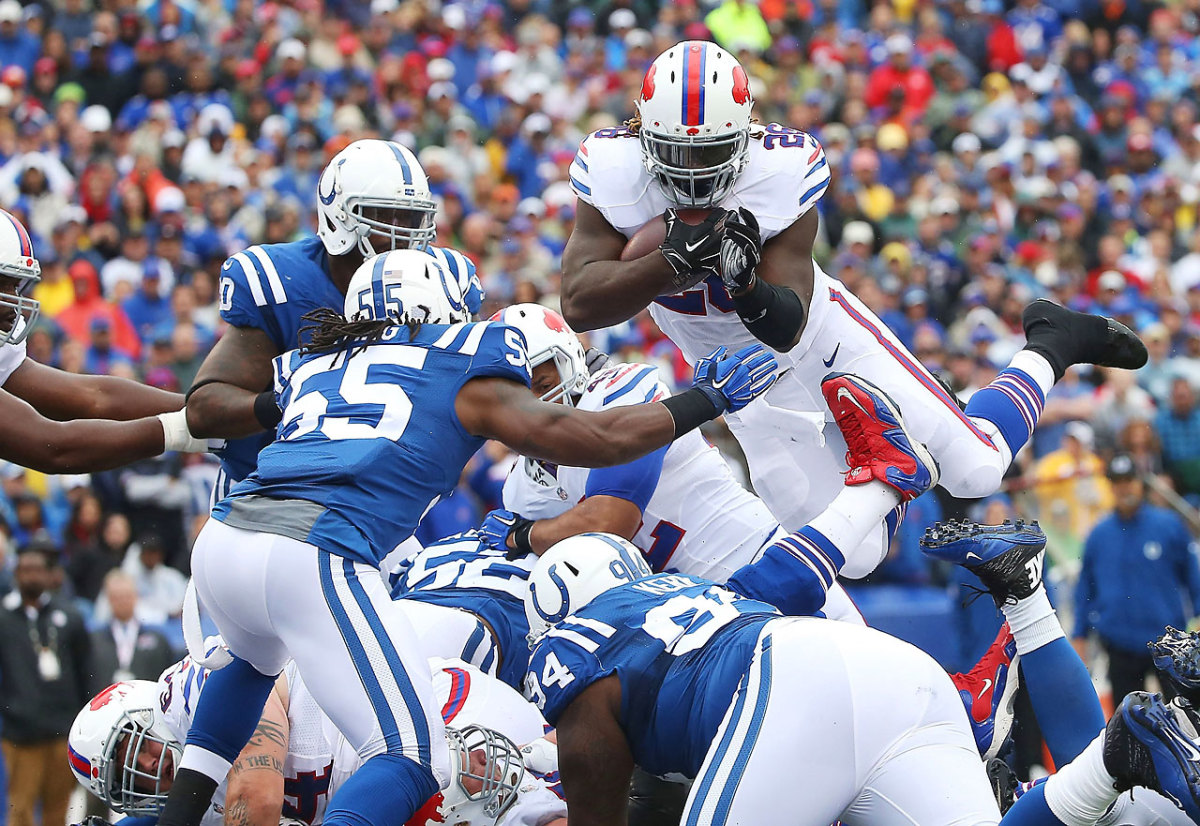
Boobie Dixon of the Buffalo Bills jumps into the endzone for a touchdown against the Indianapolis Colts.
Marcus Mariota
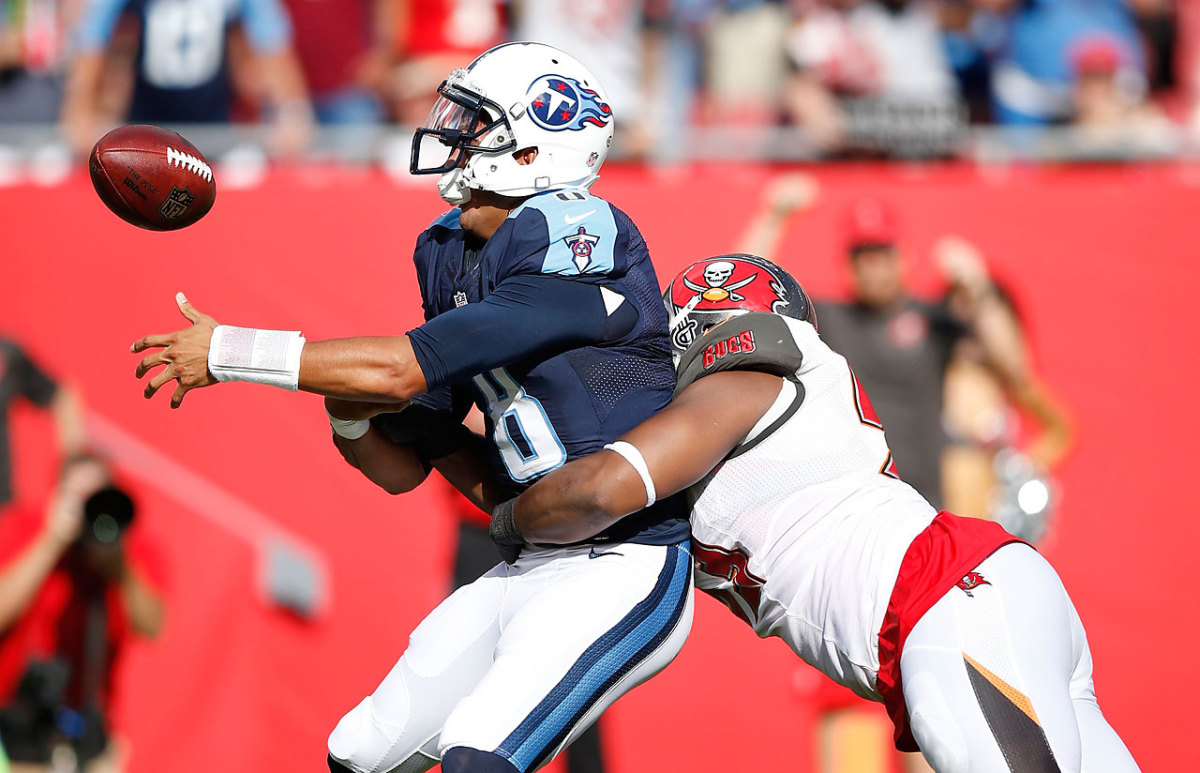
Marcus Mariota of the Tennessee Titans fumbles the ball after being sacked by Gerald McCoy of the Tampa Bay Buccaneer.
Bishop Sankey
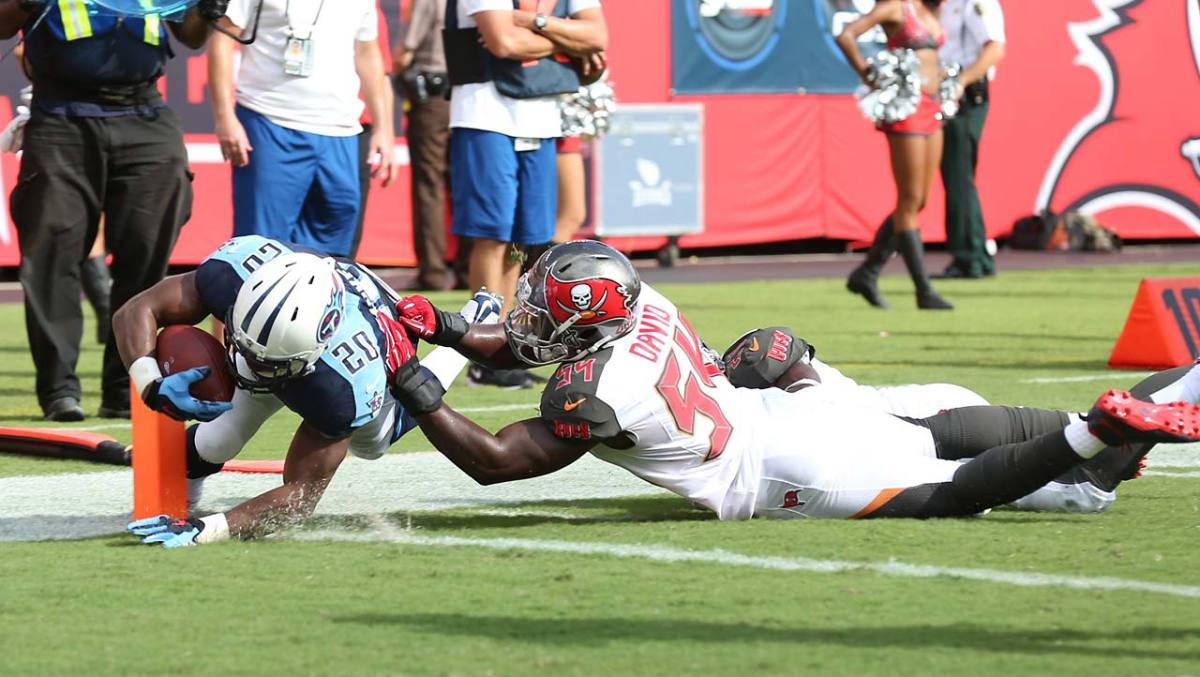
Bishop Sankey scores one of his two touchdowns.
Ben Roethlisberger
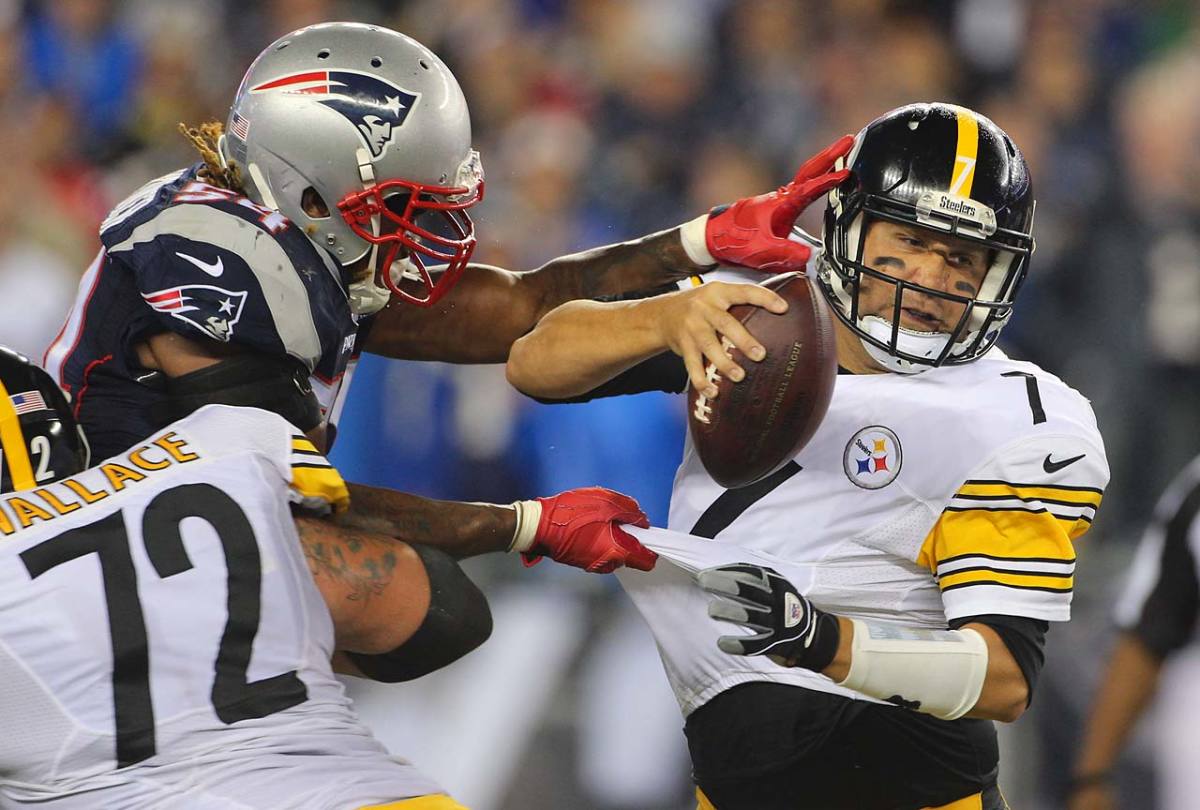
Ben Roethlisberger is pressured by the Patriots in an opening-week loss.
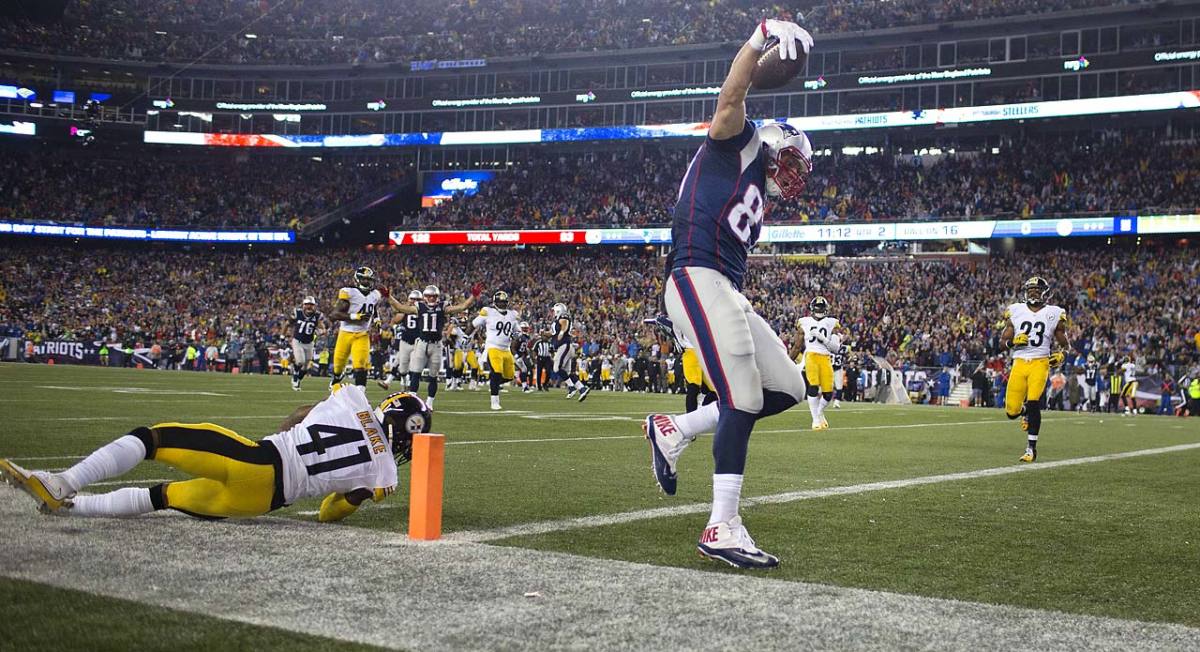
Darrius Heyward-Bey
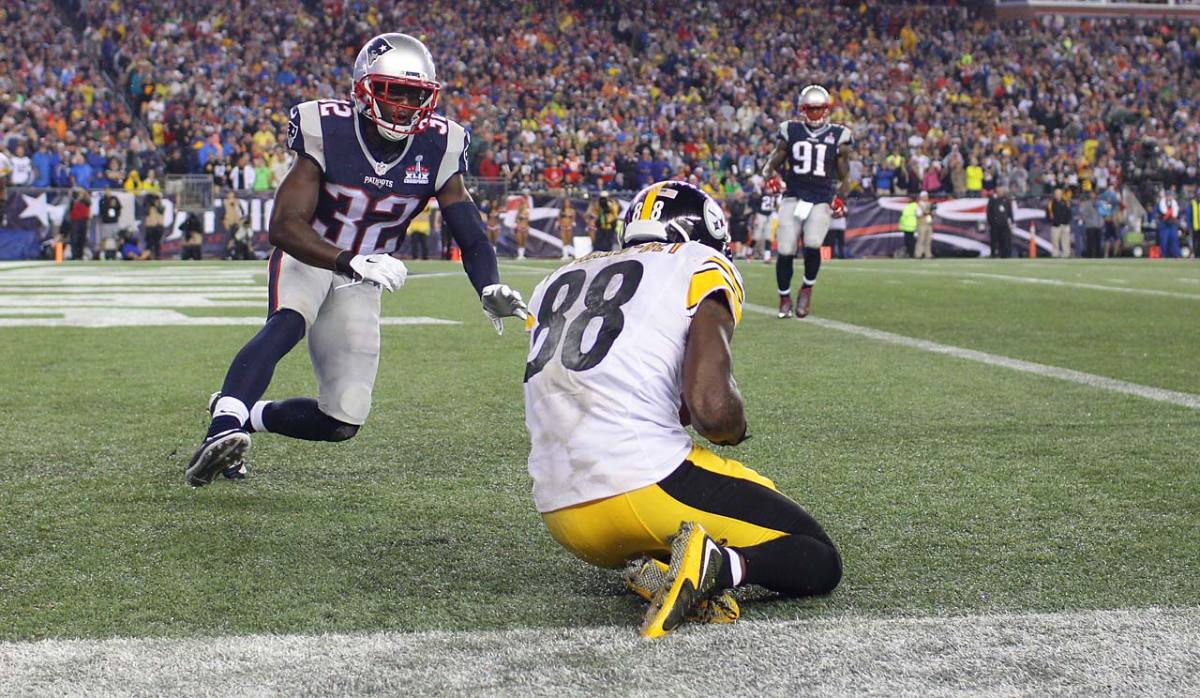
Darrius Heyward-Bey couldn't turn this catch into a touchdown because his foot was out of bounds.
Jarvis Landry
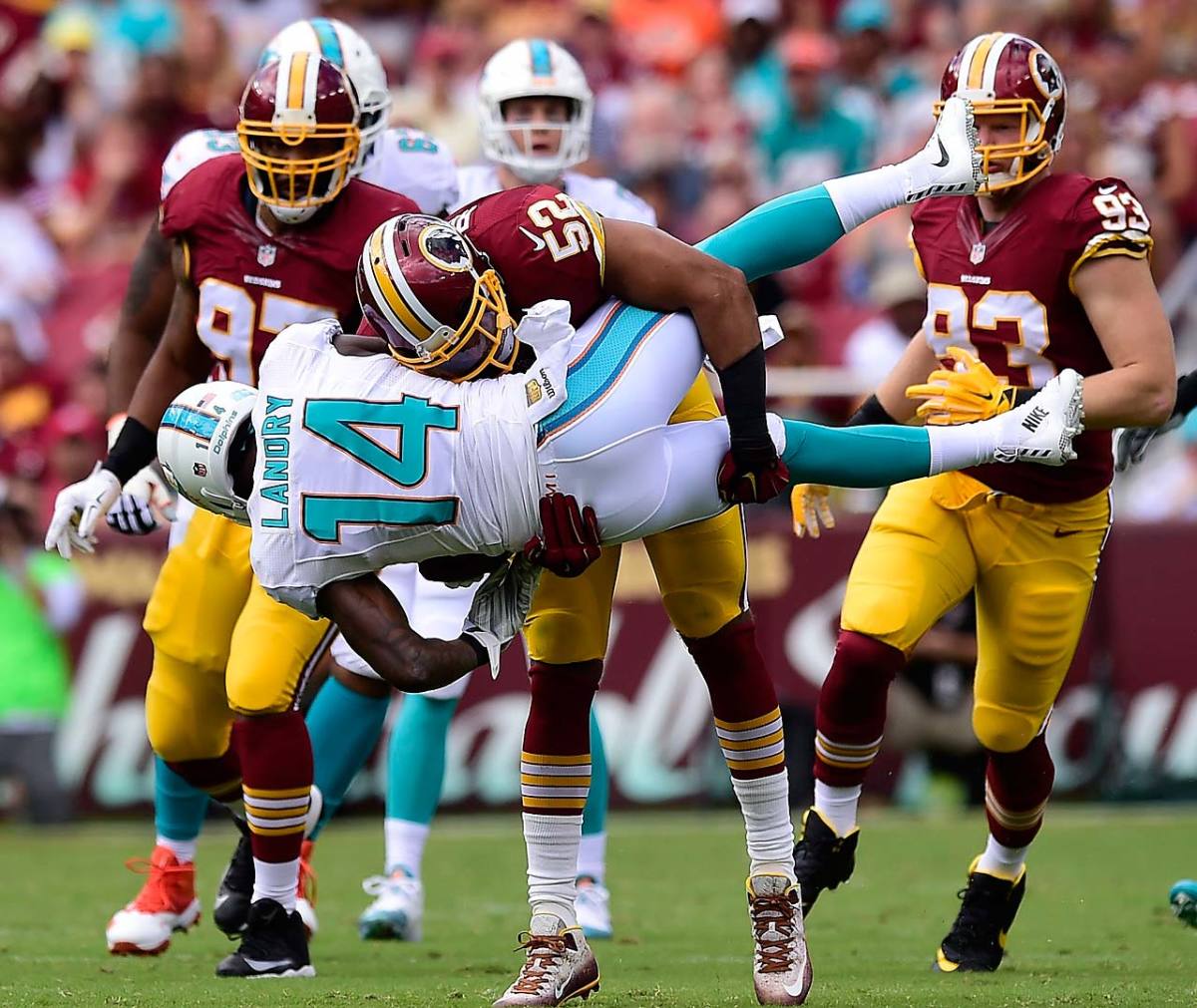
Jarvis Landry is taken down hard by the Redskins.
Miami Dolphins
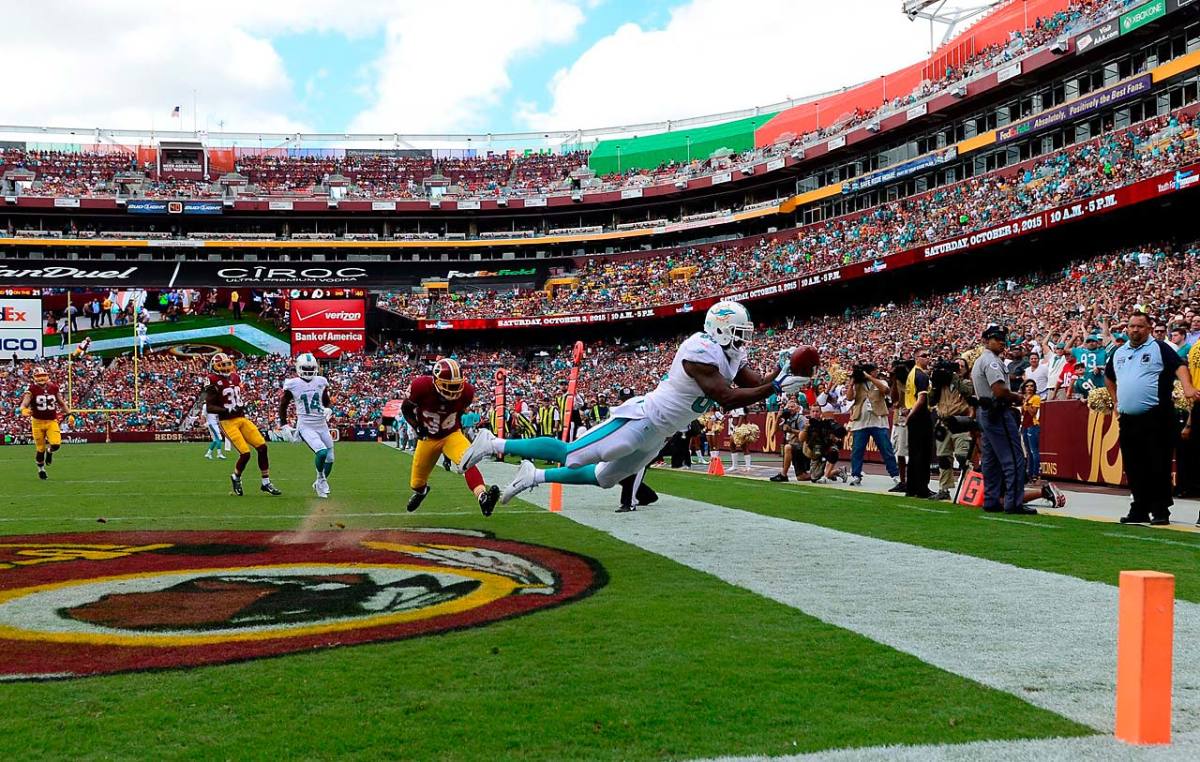
Jordan Reed
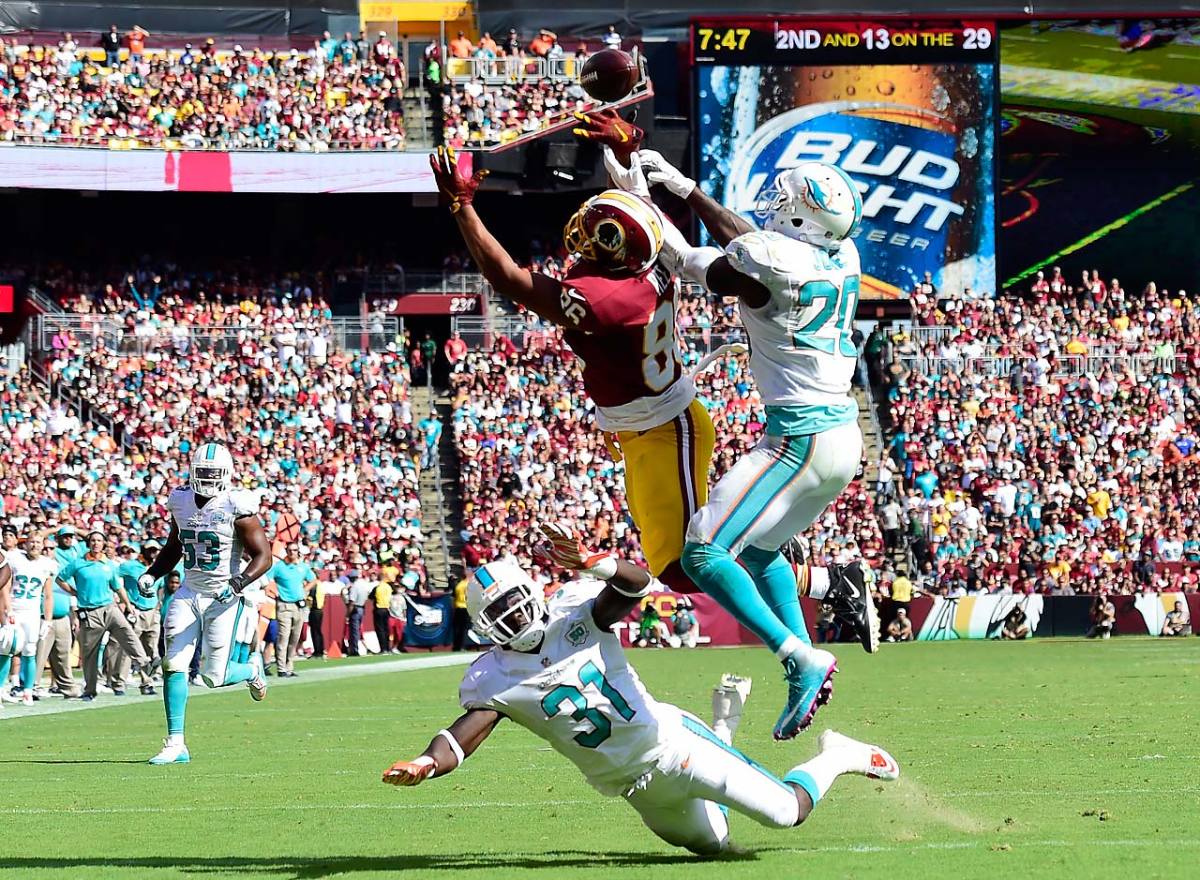
Jordan Reed was one of the most-targeted receivers in Washington's game against Miami.
Tavon Austin
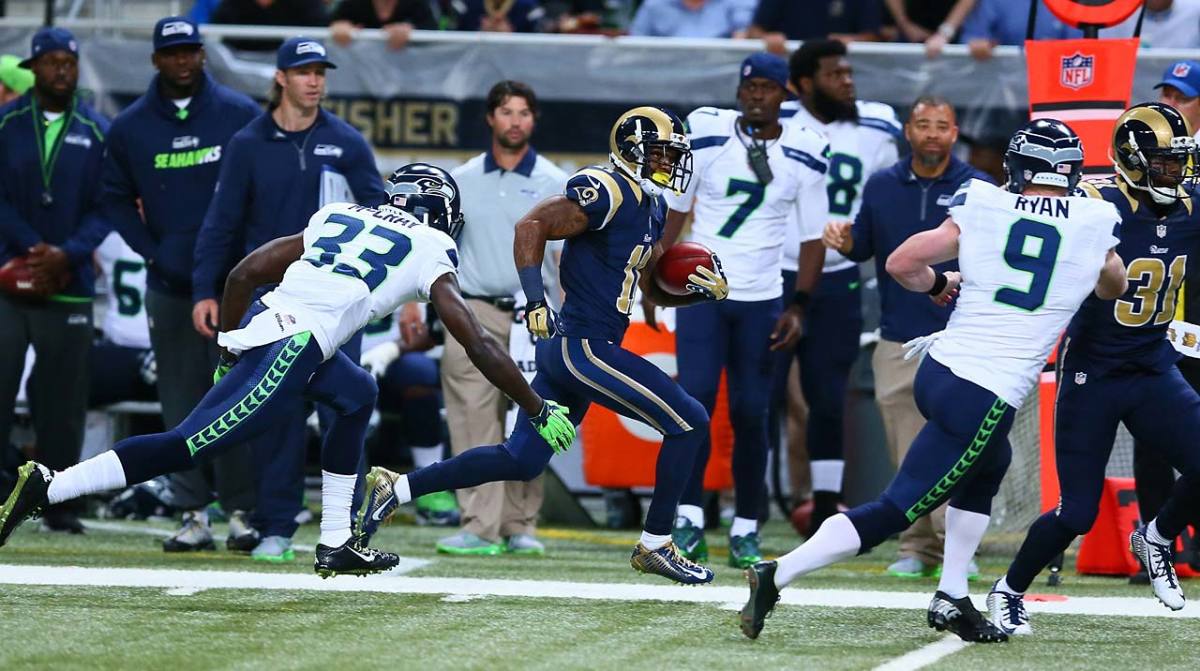
Tavon Austin heads toward the end zone on his 75-yard punt return against Seattle
Rams-Seahawks
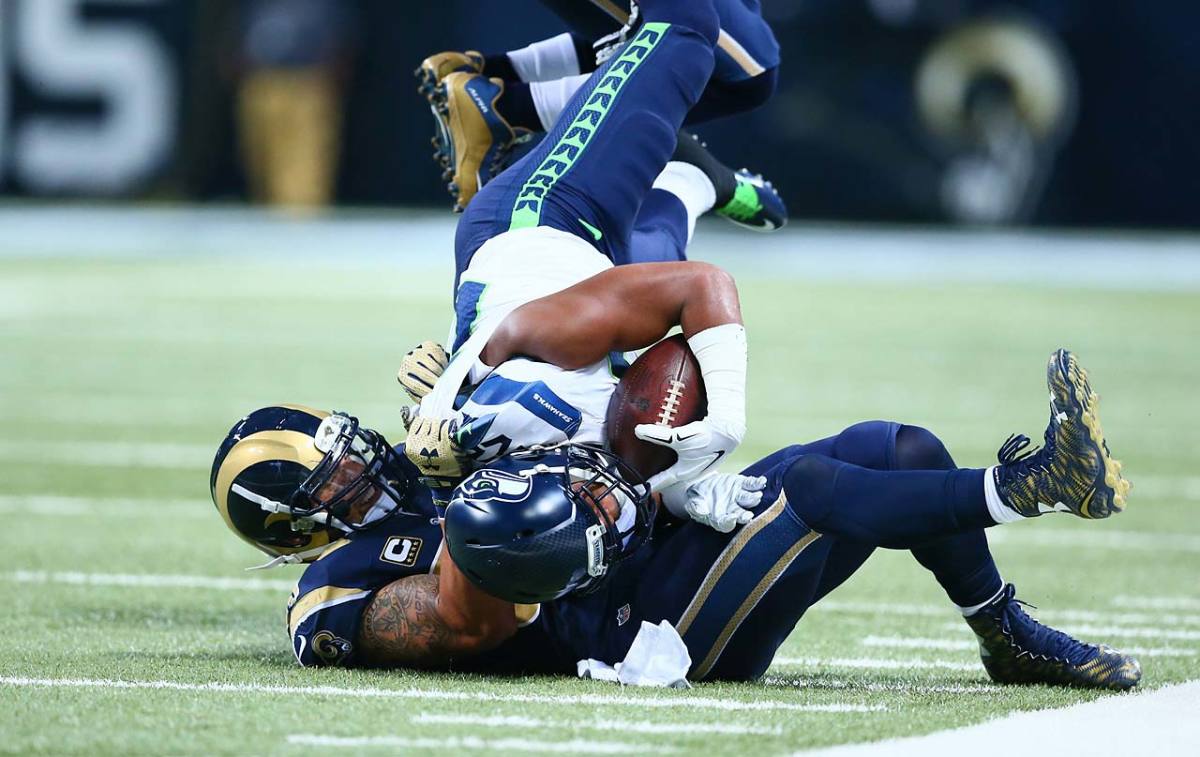
St. Louis Rams
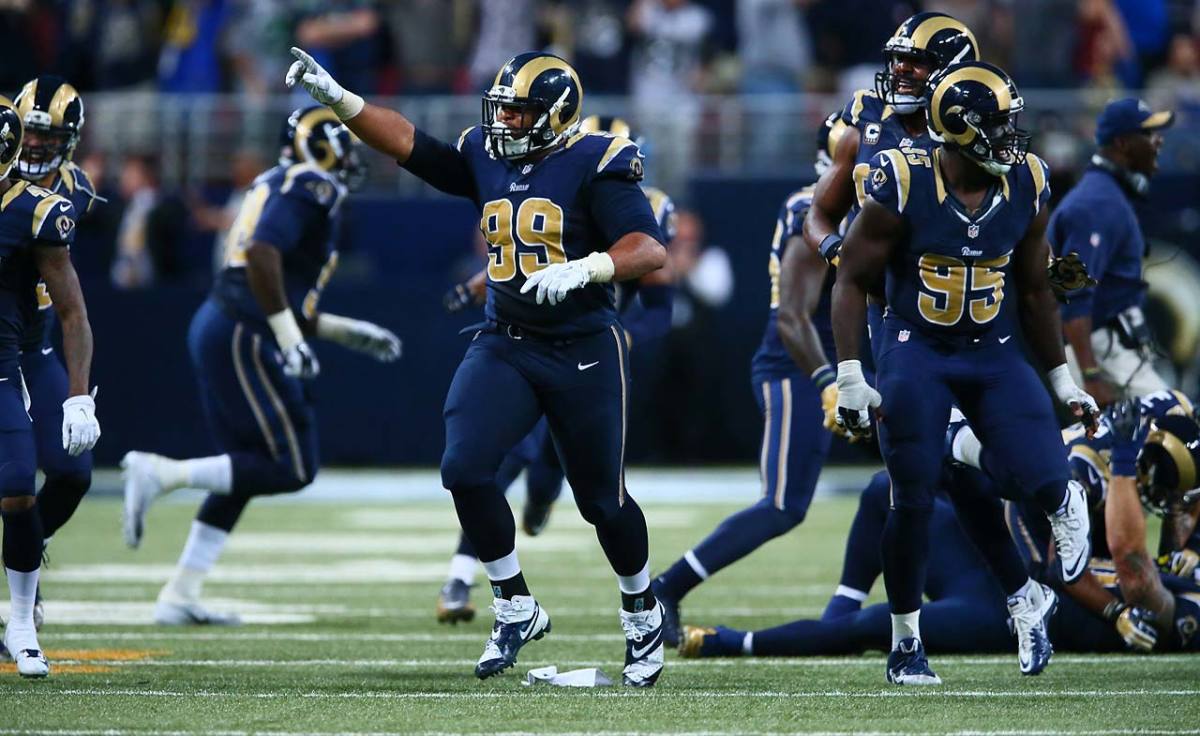
The St. Louis Rams celebrate their overtime victory over Seattle.
Danny Woodhead
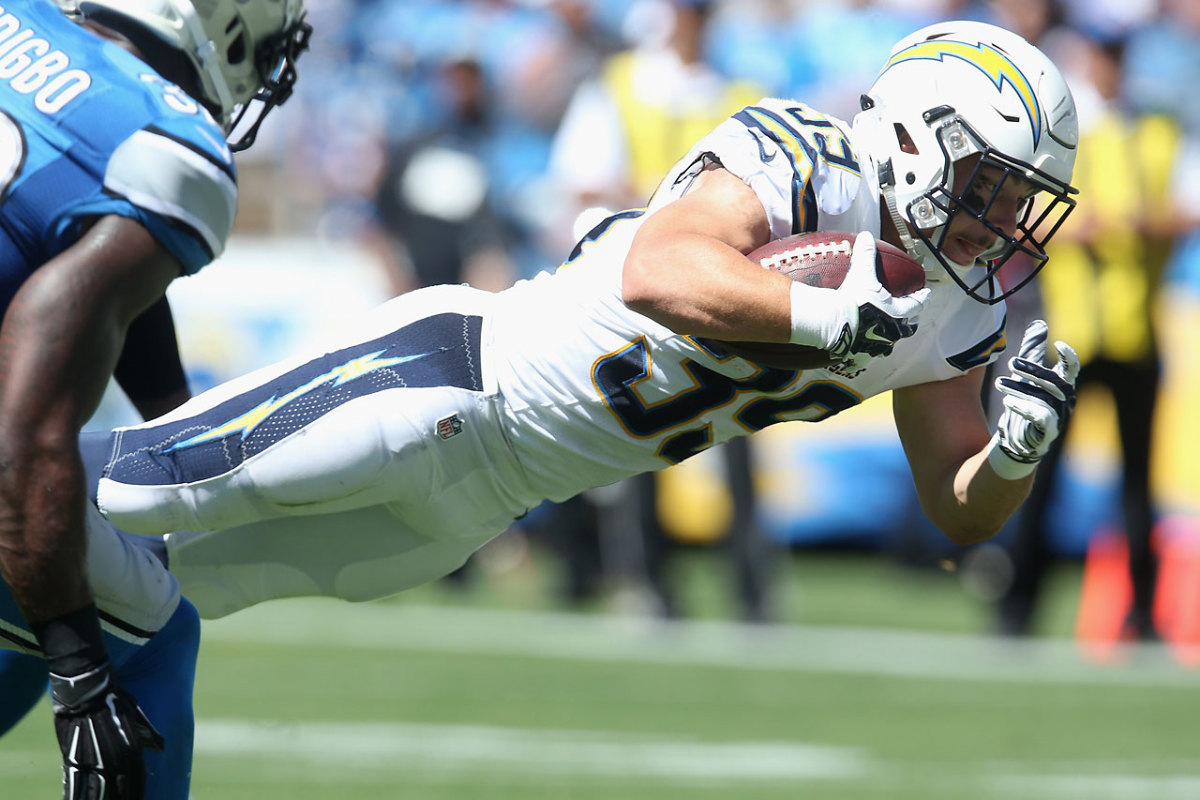
Running back Danny Woodhead of the San Diego Chargers scores a touchdown against the Detroit Lions.
Melvin Gordon
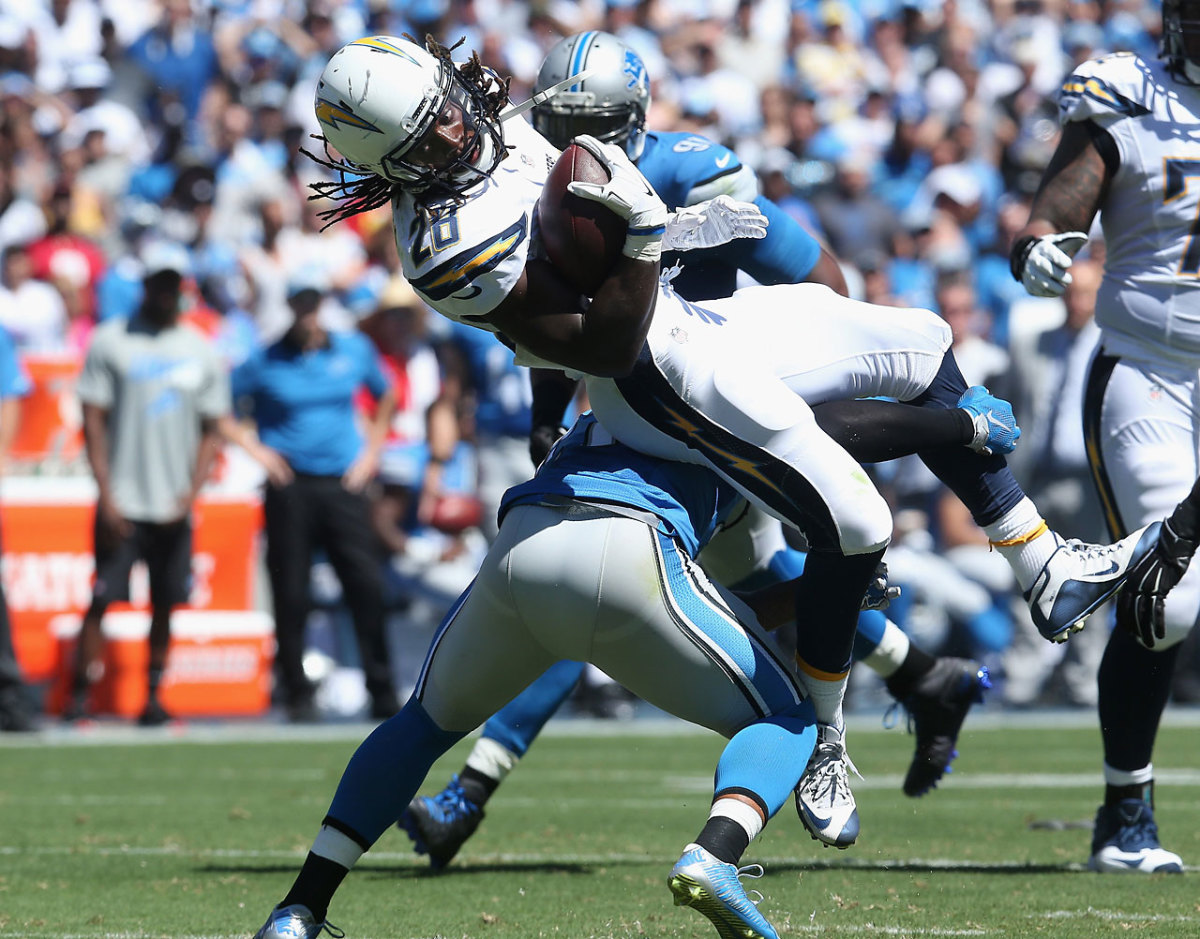
Running back Melvin Gordon of the San Diego Chargers is tackled by the Detroit Lions defense.
Calvin Johnson
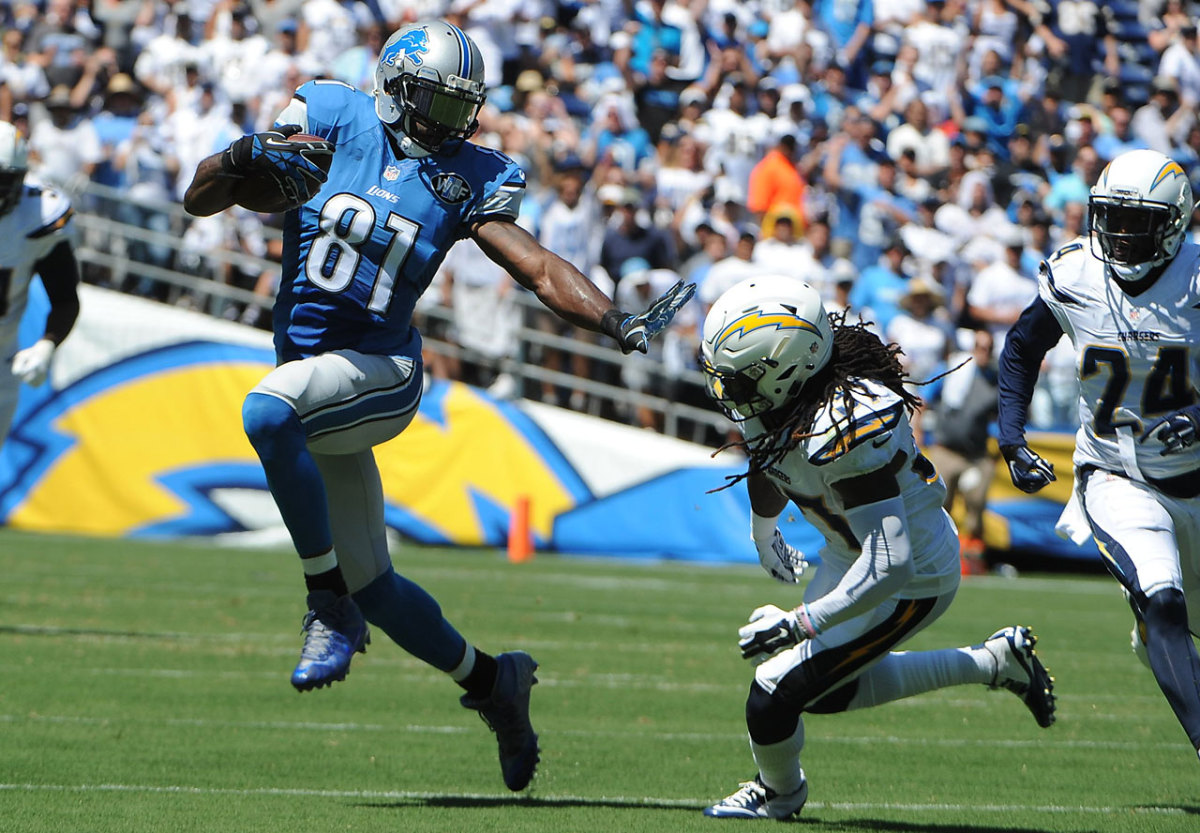
Detroit wideout Calvin Johnson tries to get around San Diego Chargers safety Jahleel Addae.
Brandon Coleman
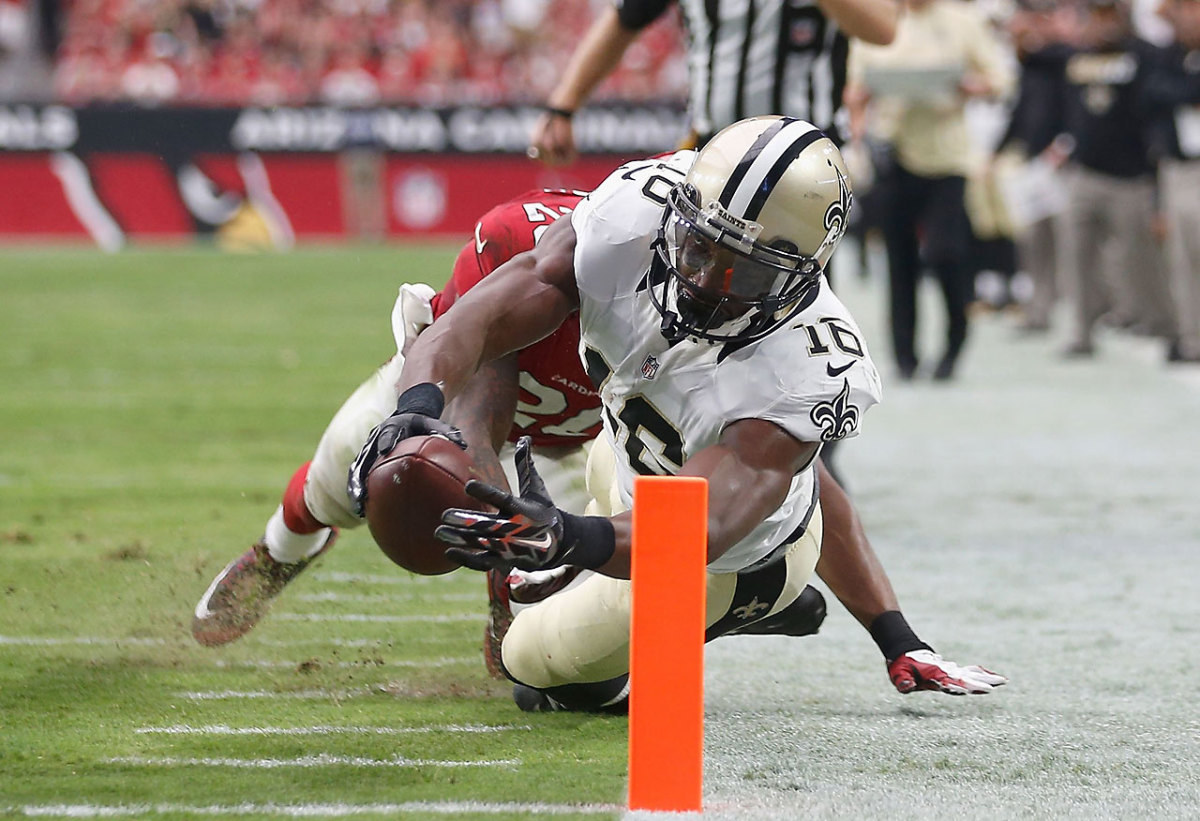
Wide receiver Brandon Coleman of the New Orleans Saints stretches for the end zone on a 12-yard touchdown against the Arizona Cardinals.
Willie Snead
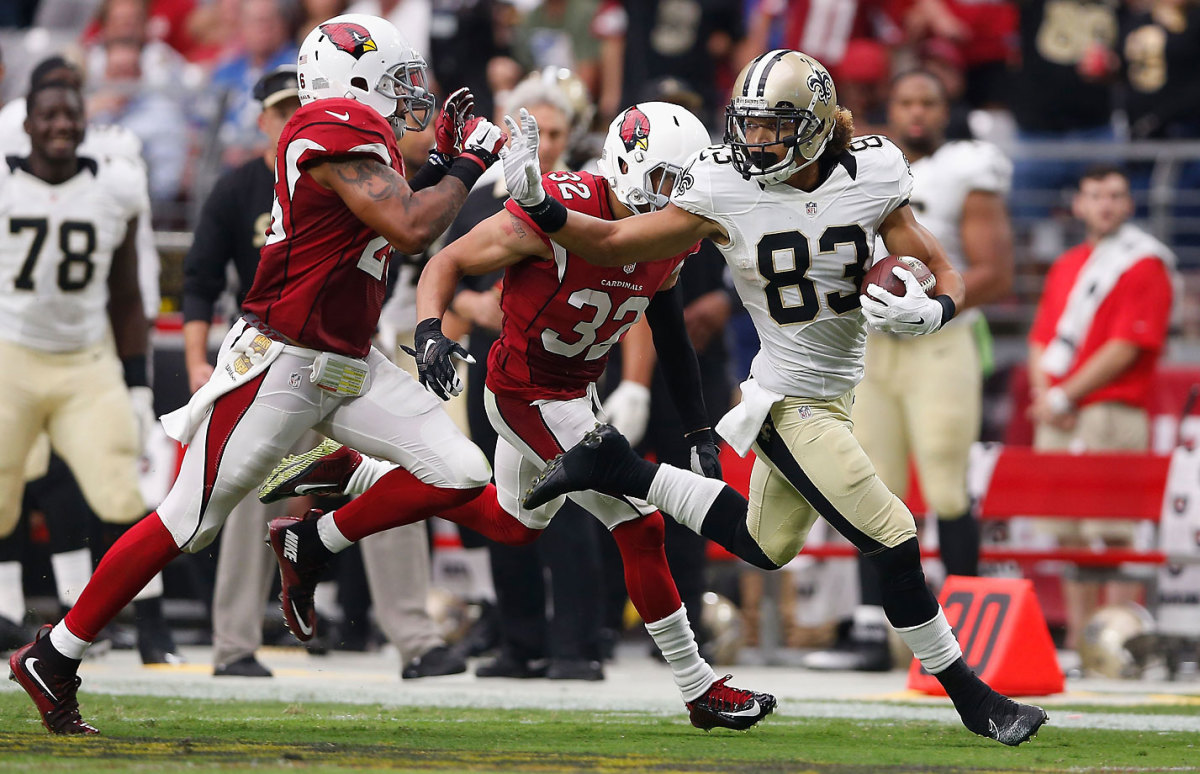
Wide receiver Willie Snead of the New Orleans Saints stiff arms free safety Rashad Johnson of the Arizona Cardinals.
Larry Fitzgerald
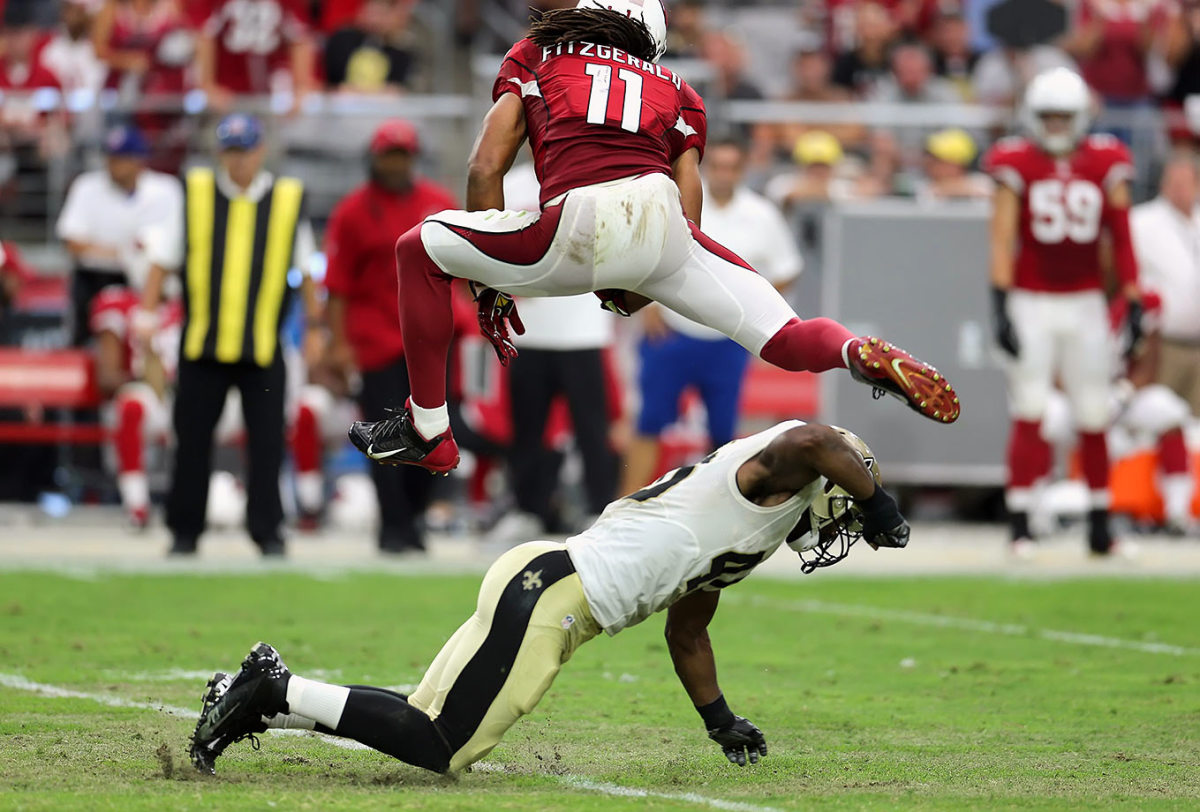
Wide receiver Larry Fitzgerald leaps over defensive back Delvin Breaux of the New Orleans Saints during the Arizona Cardinals victory.
Larry Fitzgerald
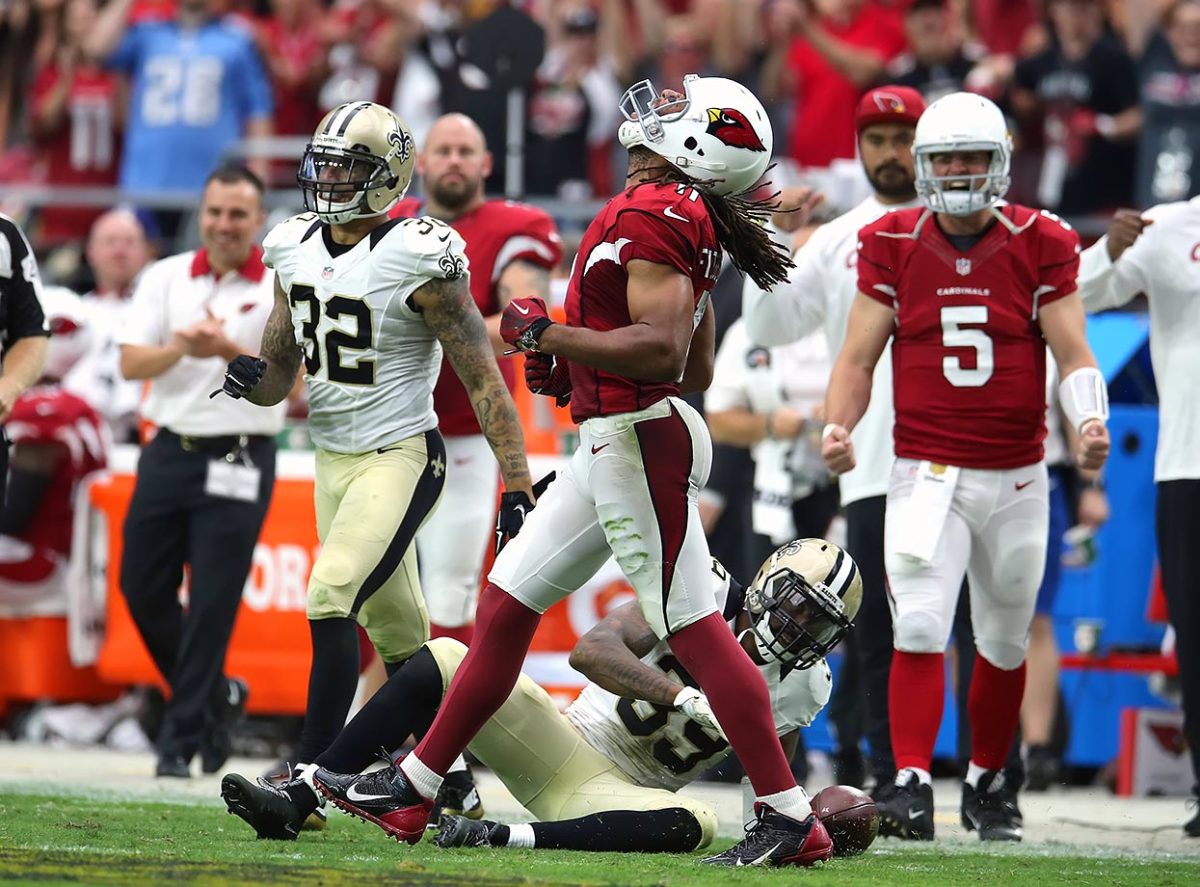
Wide receiver Larry Fitzgerald of the Arizona Cardinals celebrates a catch and run after dragging three New Orleans Saints defenders for extra yardage.
Tyrann Mathieu
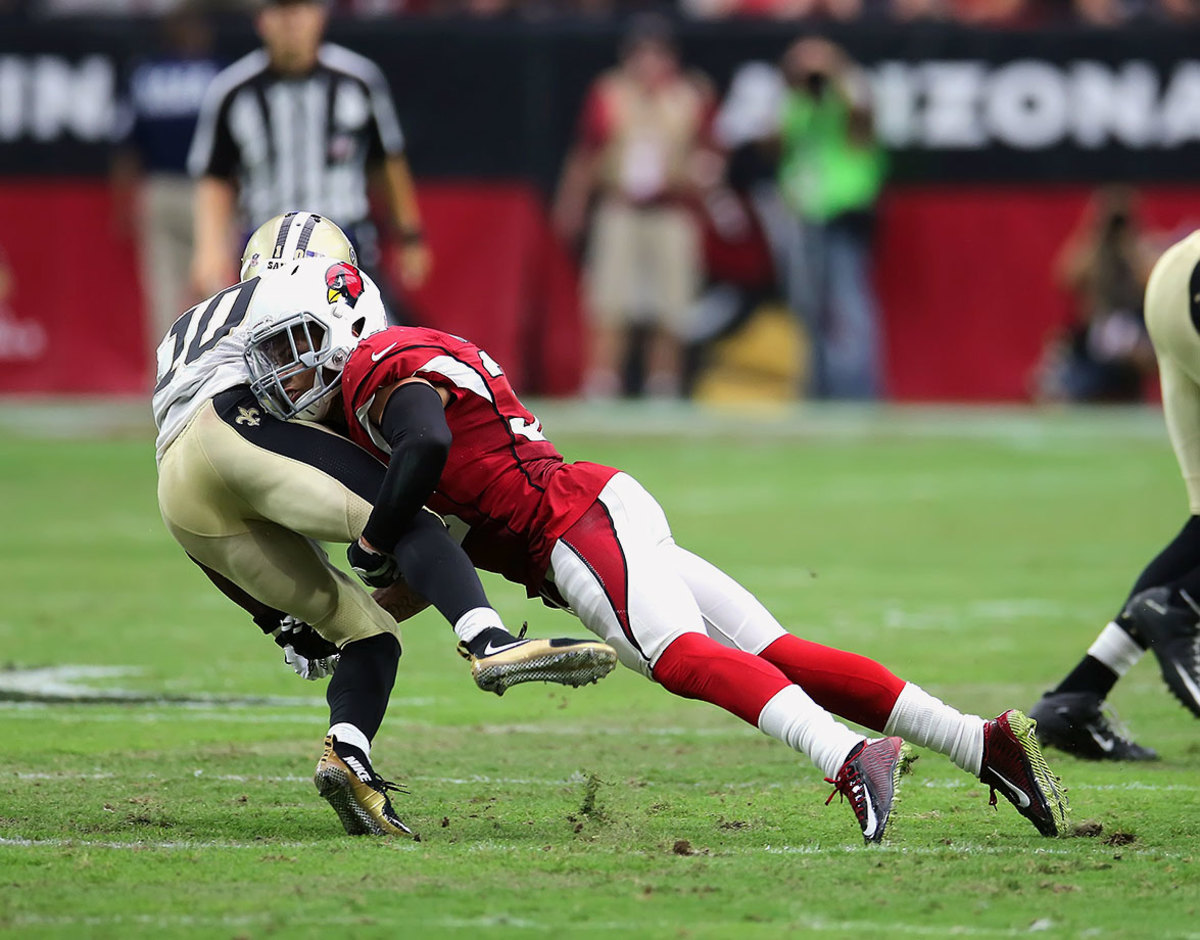
Cornerback Tyrann Mathieu of the Arizona Cardinals makes a big tackle on New Orleans Saints wide receiver Brandin Cooks.
Andre Ellington
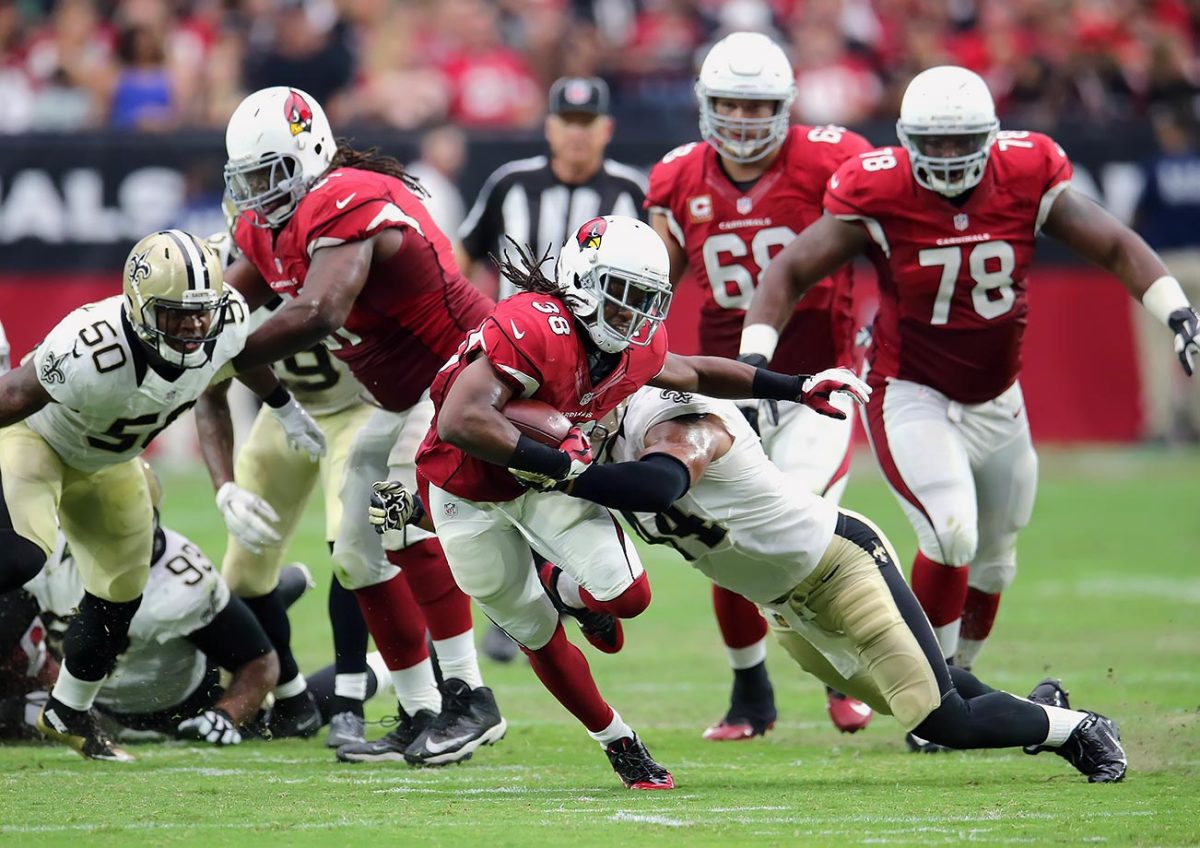
Running back Andre Ellington of the Arizona Cardinals breaks a tackle up the middle against New Orleans Saints linebacker Hau'oli Kikaha.
DeAndre Hopkins
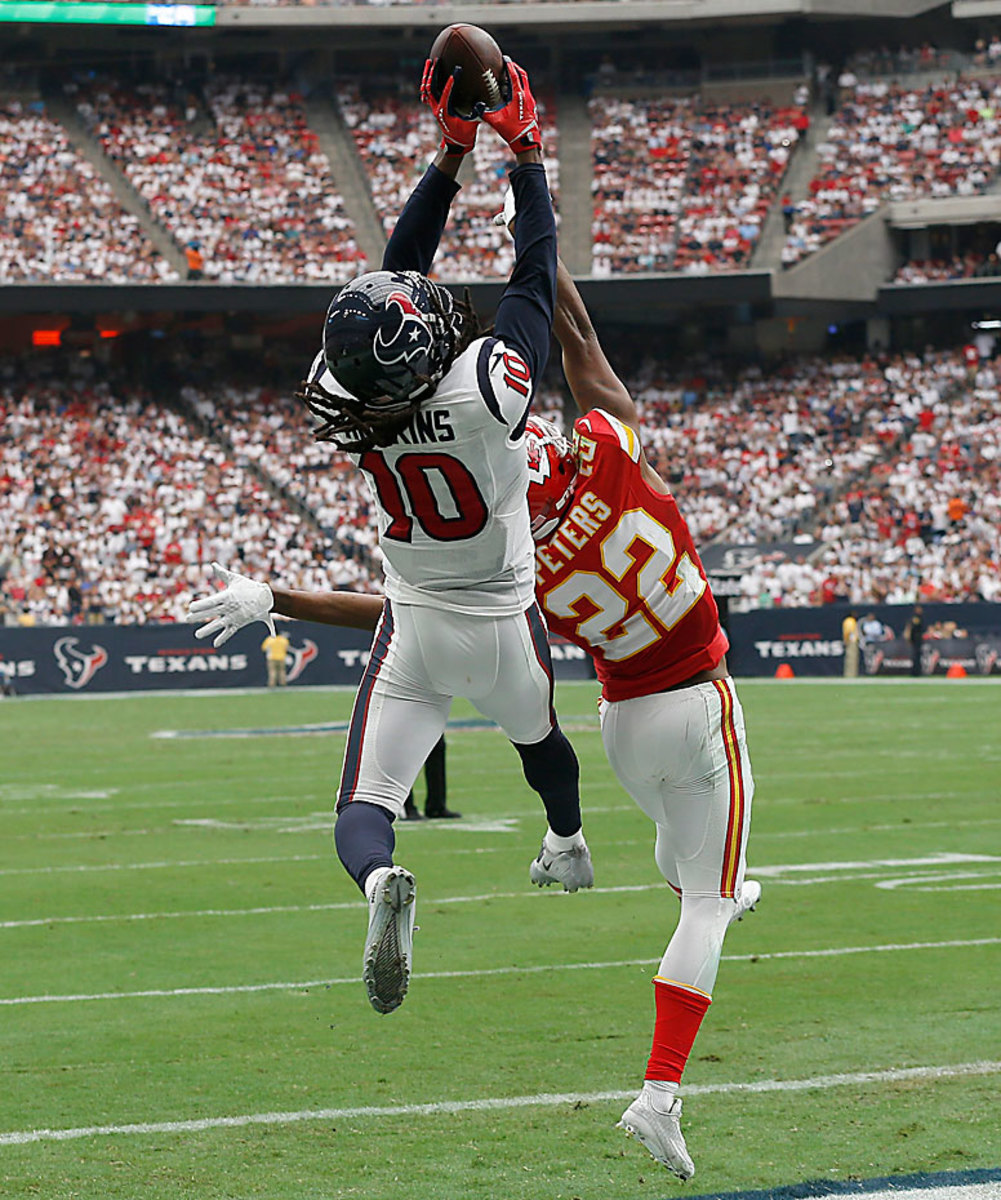
Wide receiver DeAndre Hopkins of the Houston Texans makes a touchdown catch against Marcus Peters of the Kansas City Chiefs.
Alex Smith
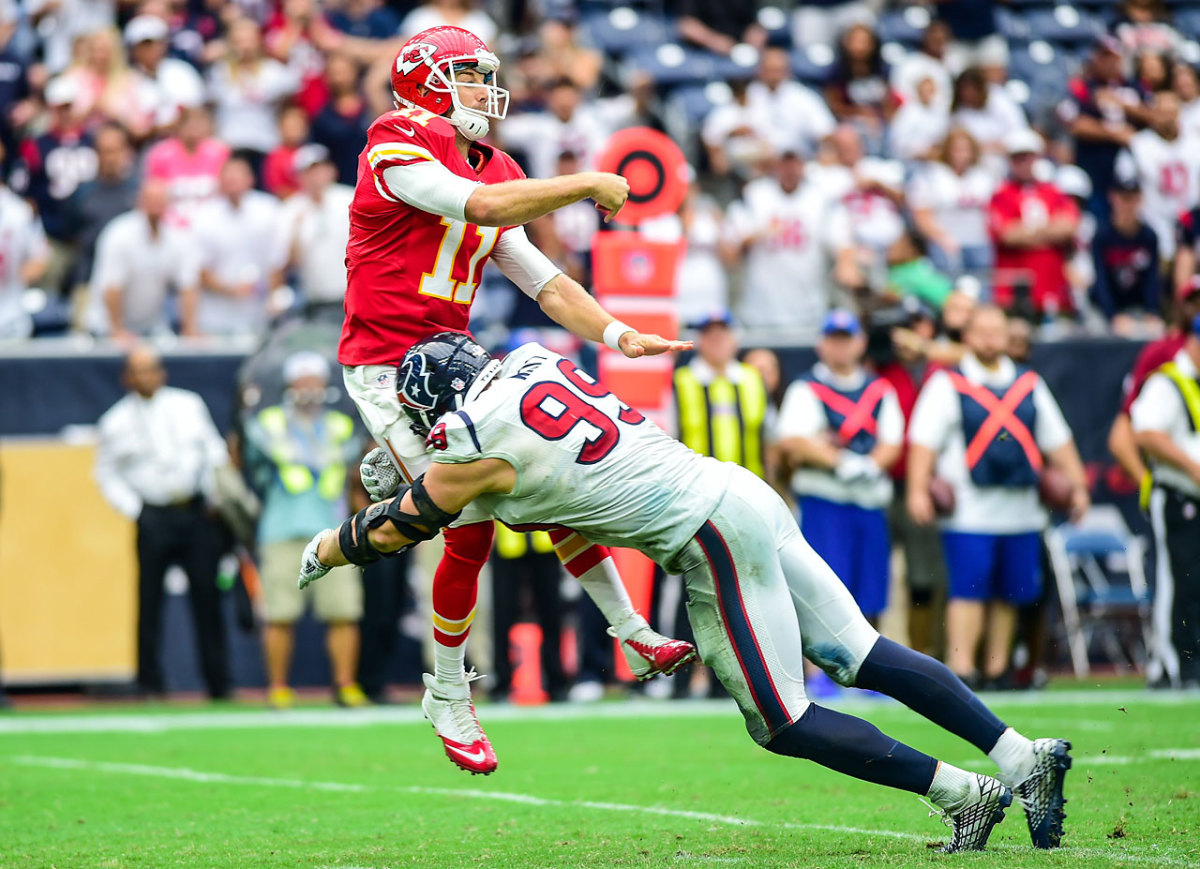
Houston Texans defensive end J.J. Watt lays a massive hit on Kansas City Chiefs quarterback Alex Smith.
Travis Kelce
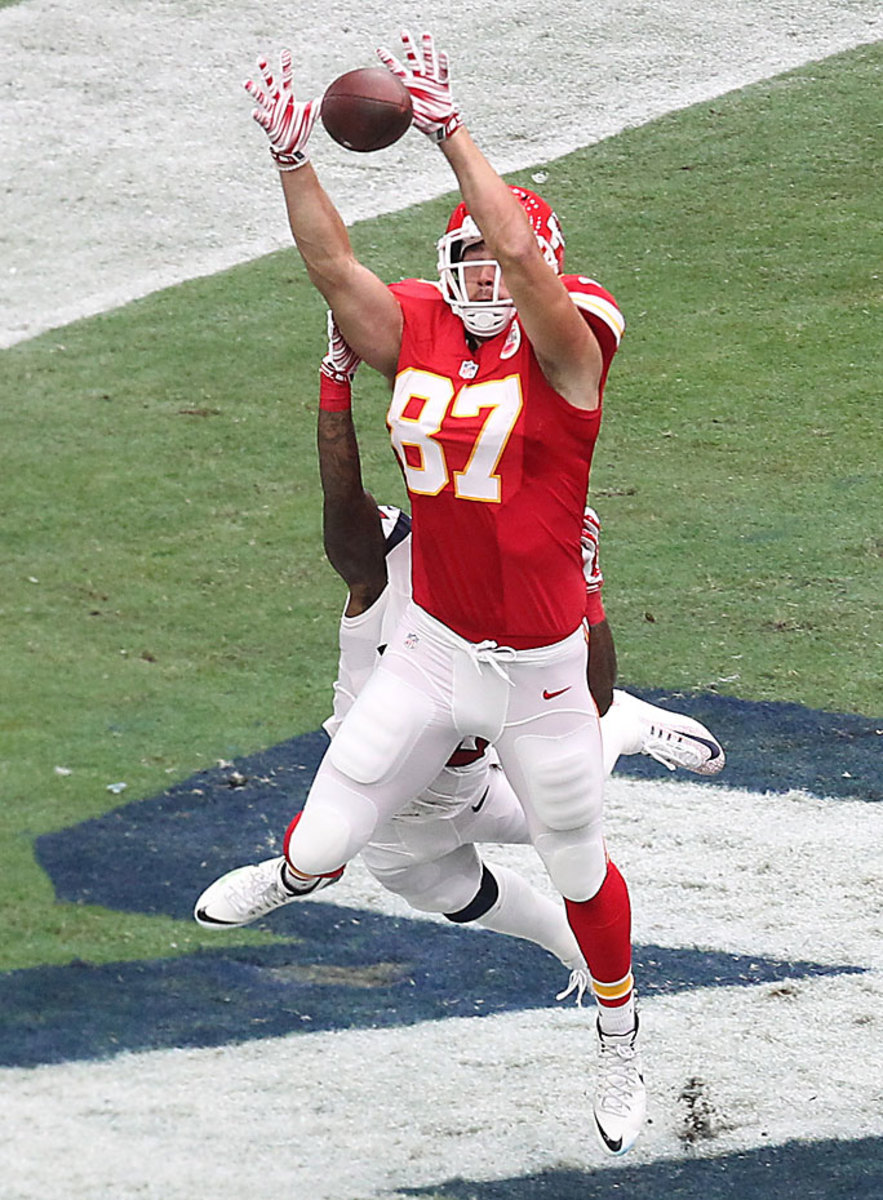
Travis Kelce of the Kansas City Chiefs makes a touchdown catch against Kareem Jackson of the Houston Texans.
Larry Donnell
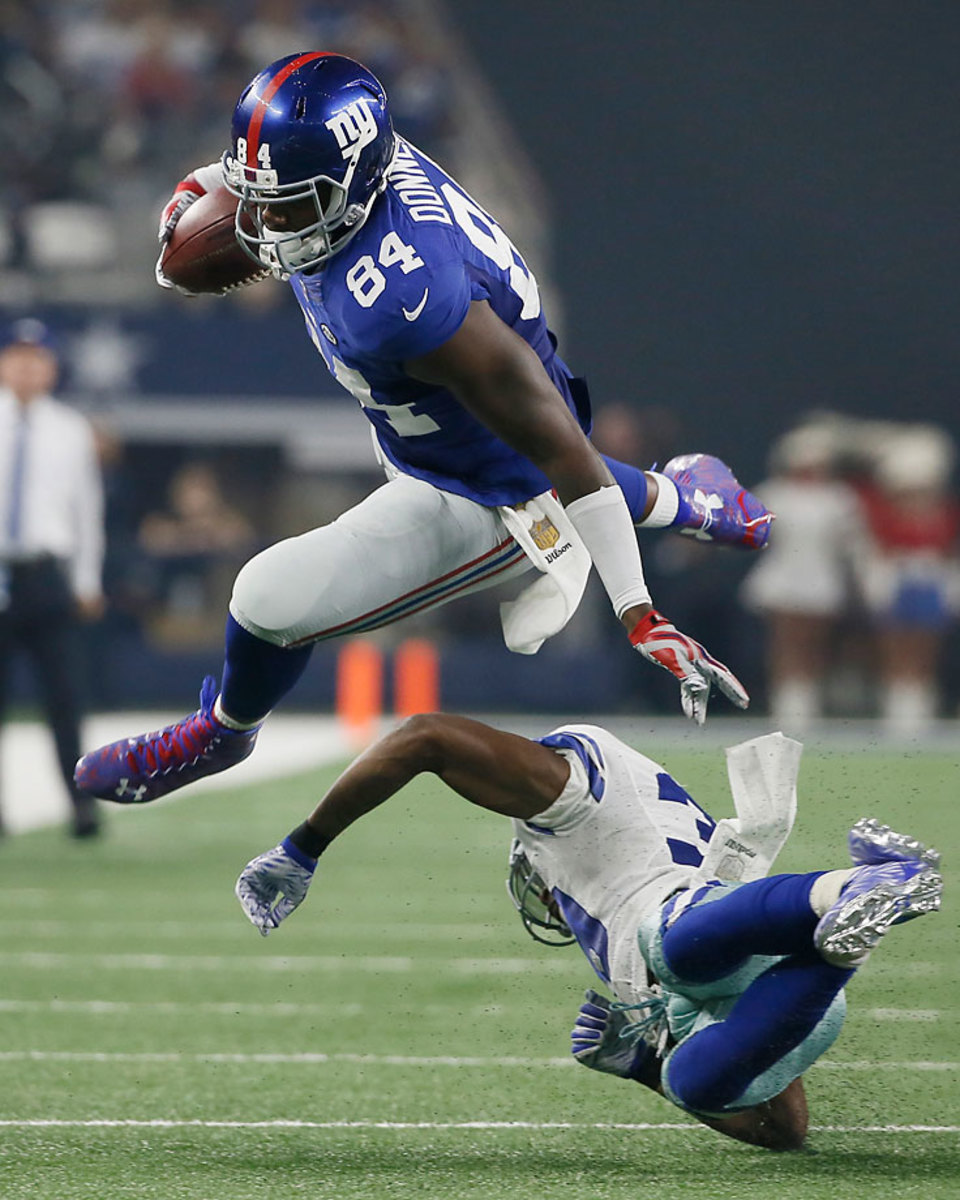
New York Giants tight end Larry Donnell leaps over Dallas Cowboys cornerback Brandon Carr.
Dez Bryant
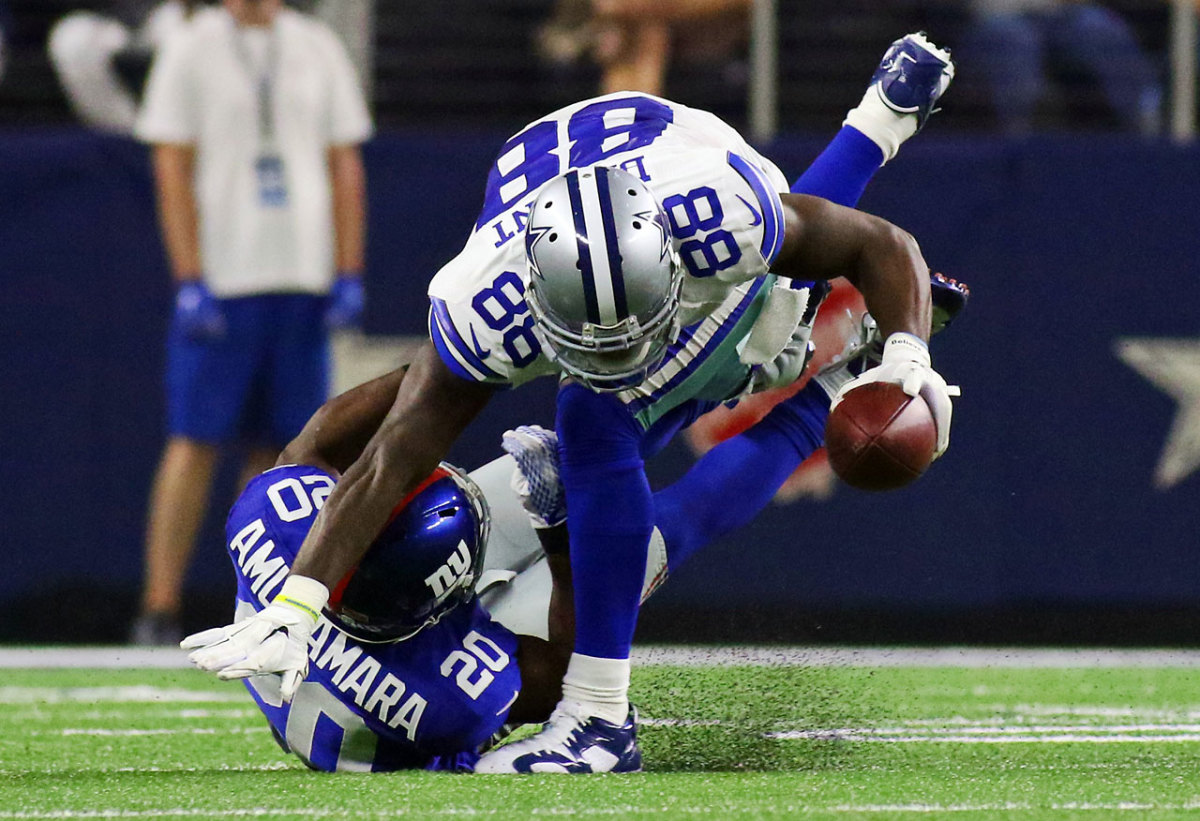
Dez Bryant makes a catch against the New York Giants before leaving with a broken bone in his right foot.
Rashad Greene
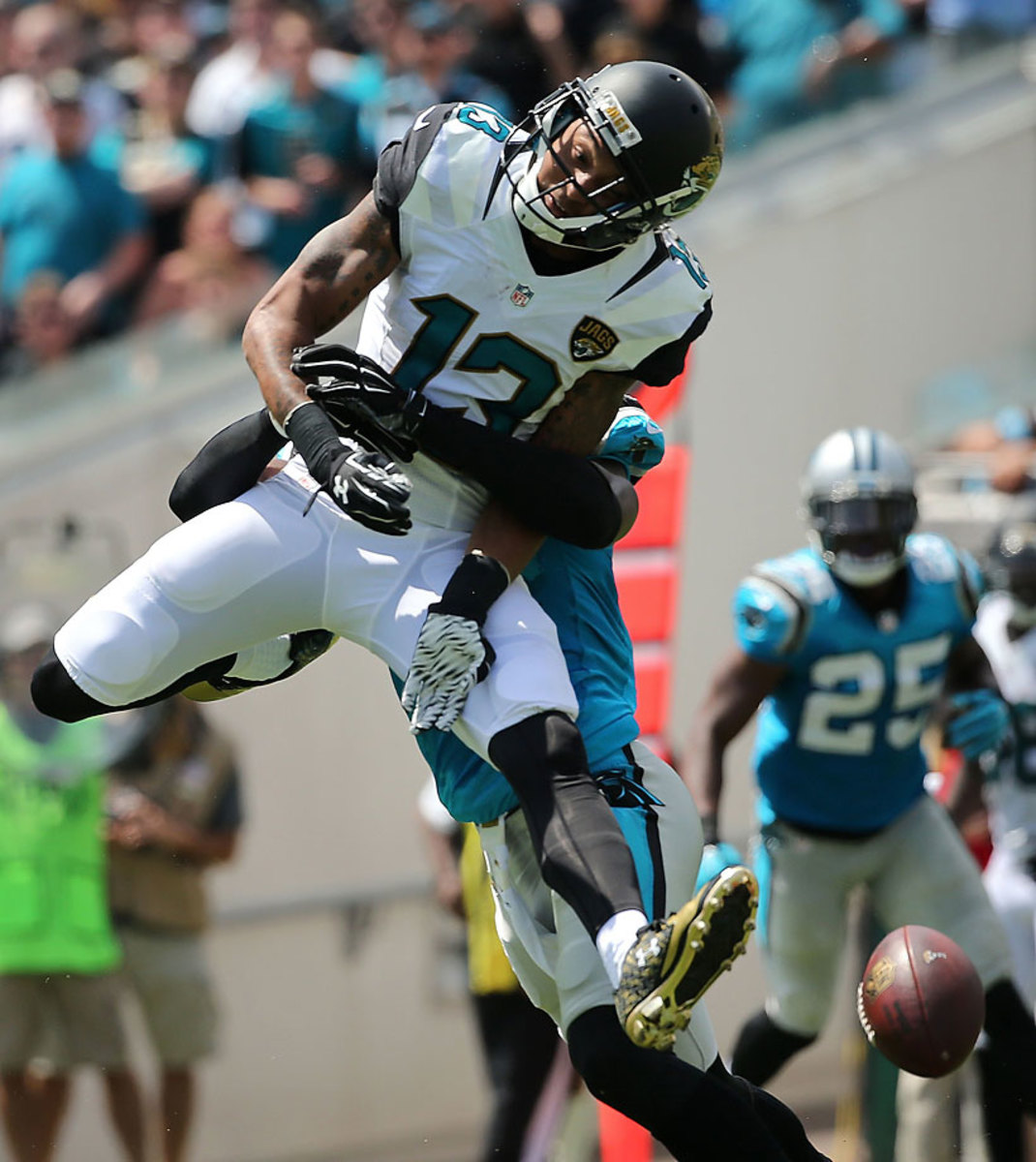
Rashad Greene of the Jacksonville Jaguars misses a pass during a game against the Carolina Panthers.
Blake Bortles
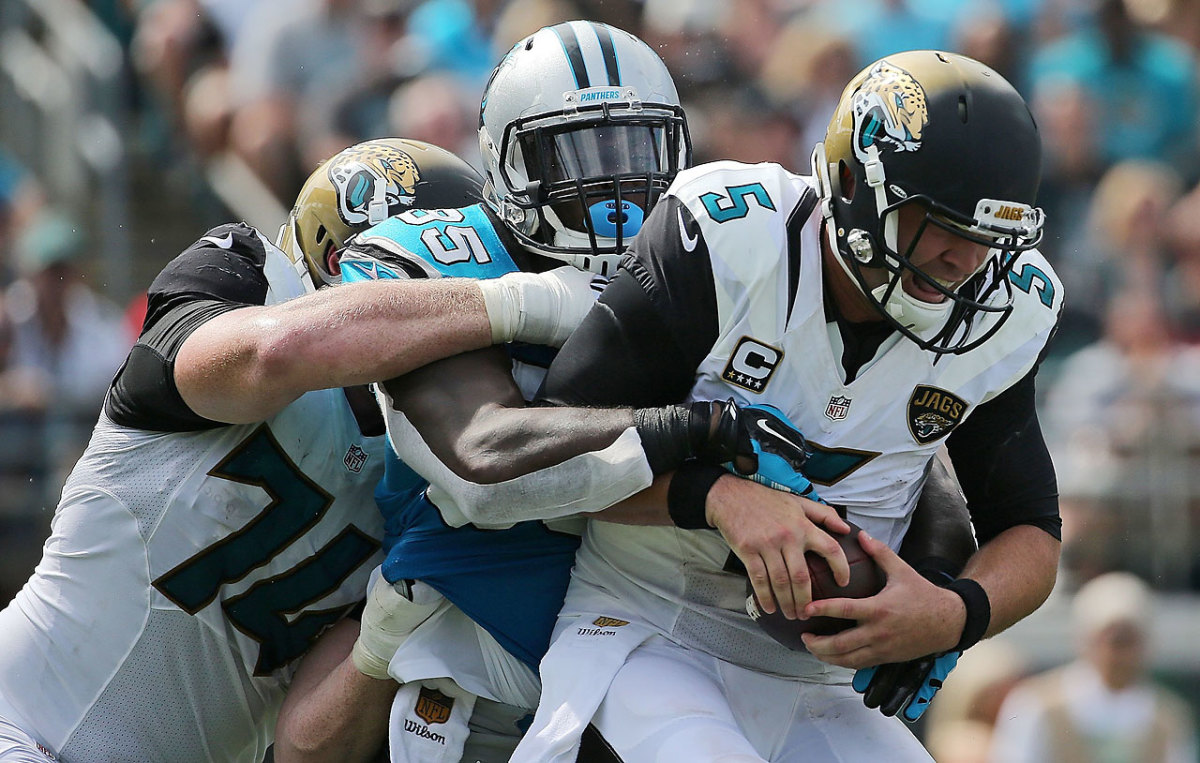
Charles Johnson of the Carolina Panthers sacks Jacksonville quarterback Blake Bortles.
Blake Bortles
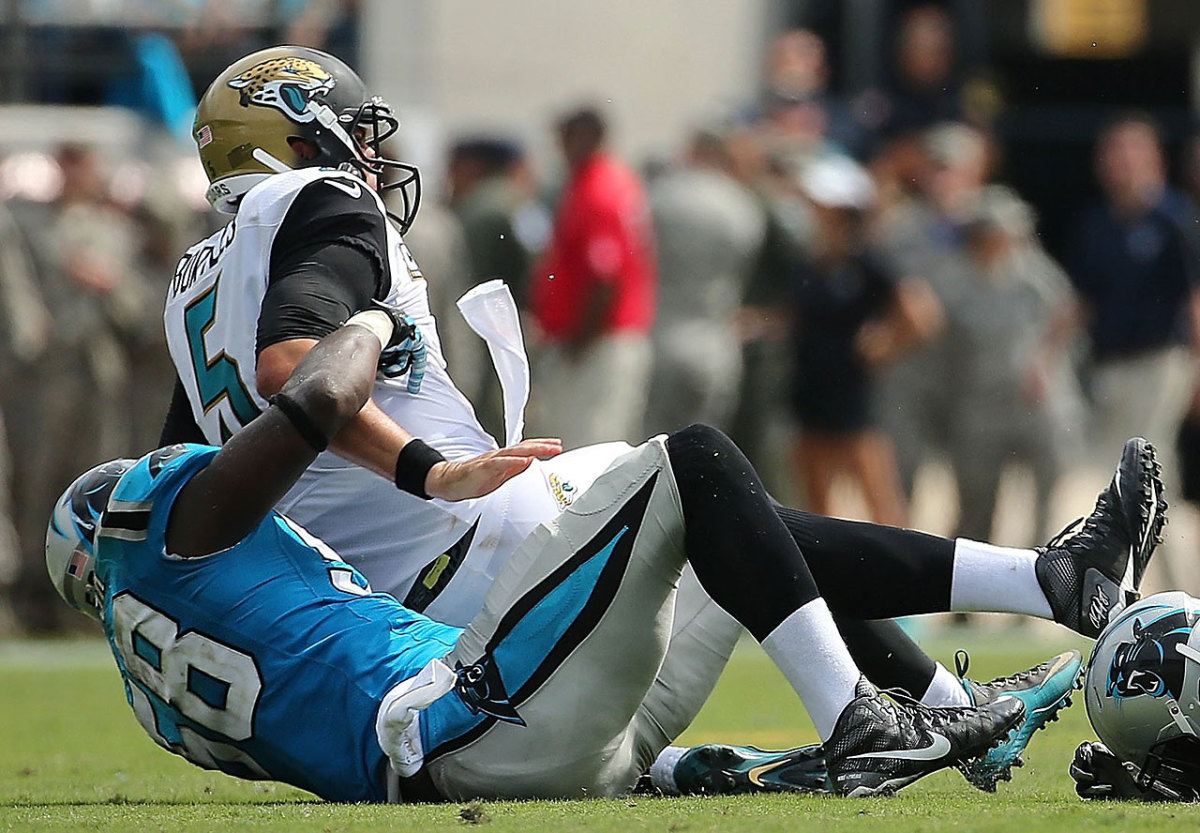
Blake Bortles of the Jacksonville Jaguars is sacked by Thomas Davis of the Carolina Panthers.
Charles Woodson
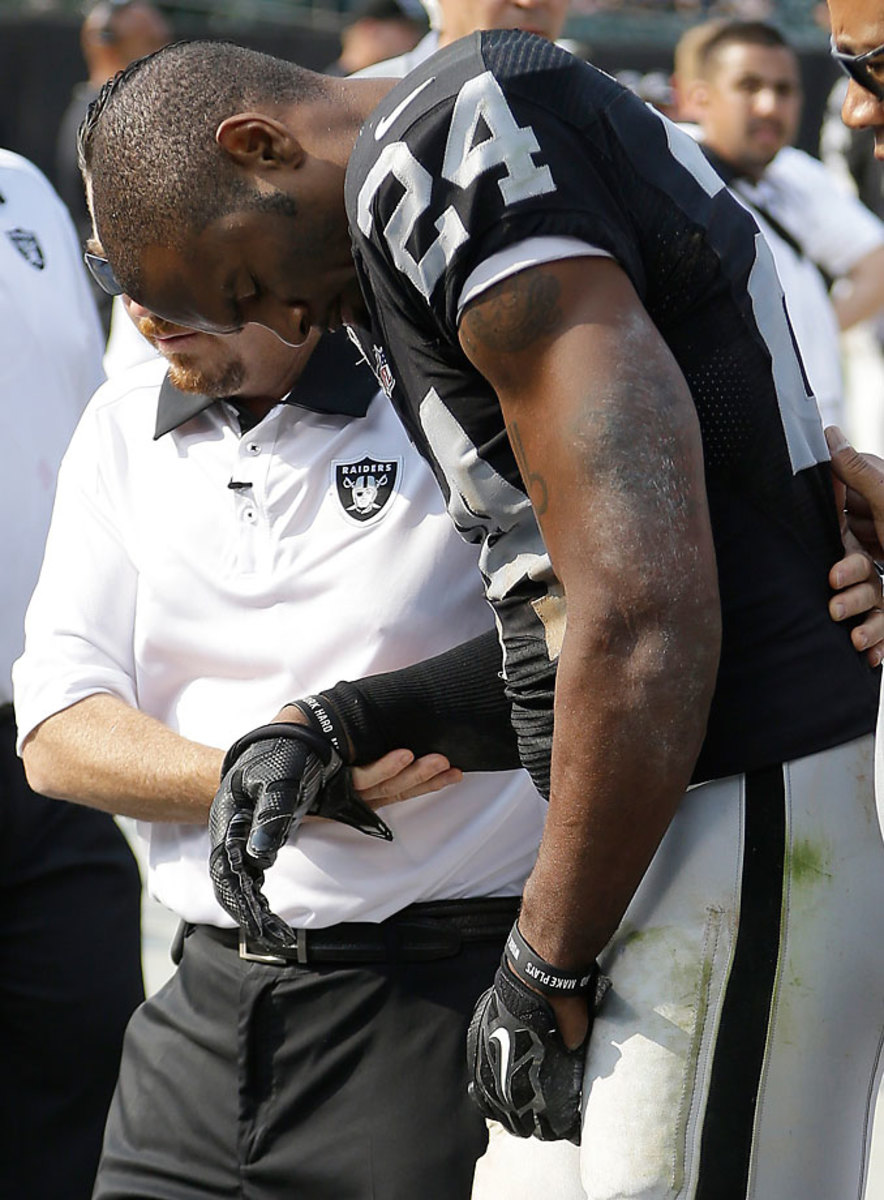
Oakland Raiders cornerback Charles Woodson is helped to the sideline after being injured during the second half of a 33-13 loss to Cincinnati.
Giovani Bernard
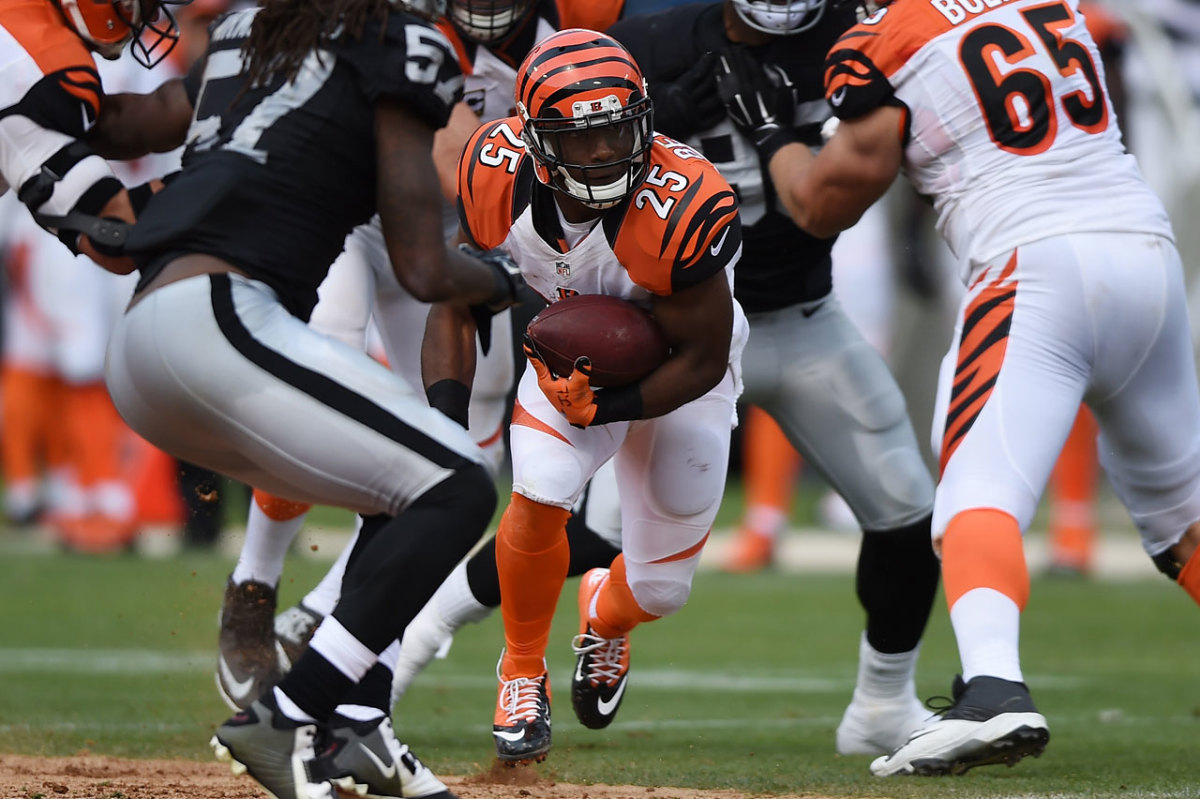
Giovani Bernard of the Cincinnati Bengals rushes against the Oakland Raiders.
Michael Crabtree
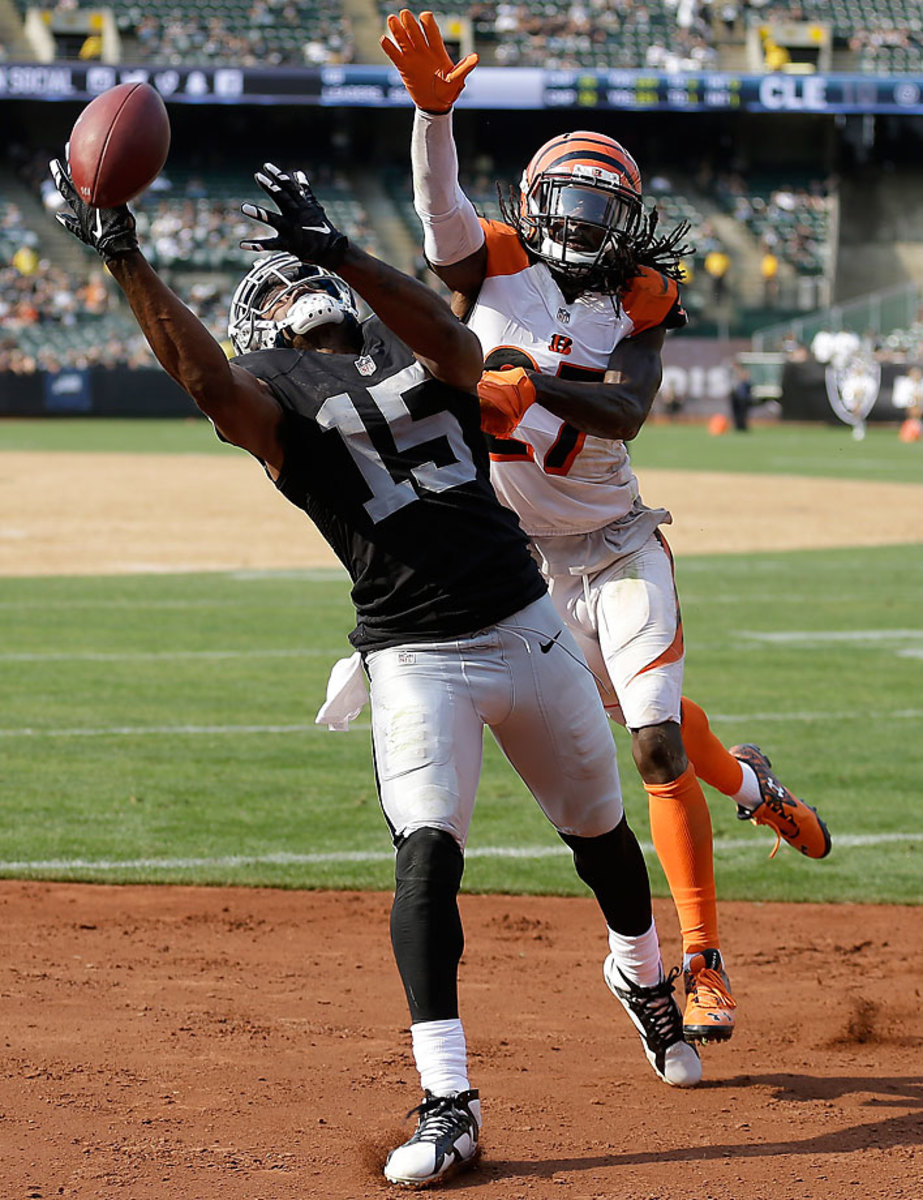
Oakland Raiders wide receiver Michael Crabtree cannot catch a pass in front of Cincinnati Bengals cornerback Dre Kirkpatrick.
